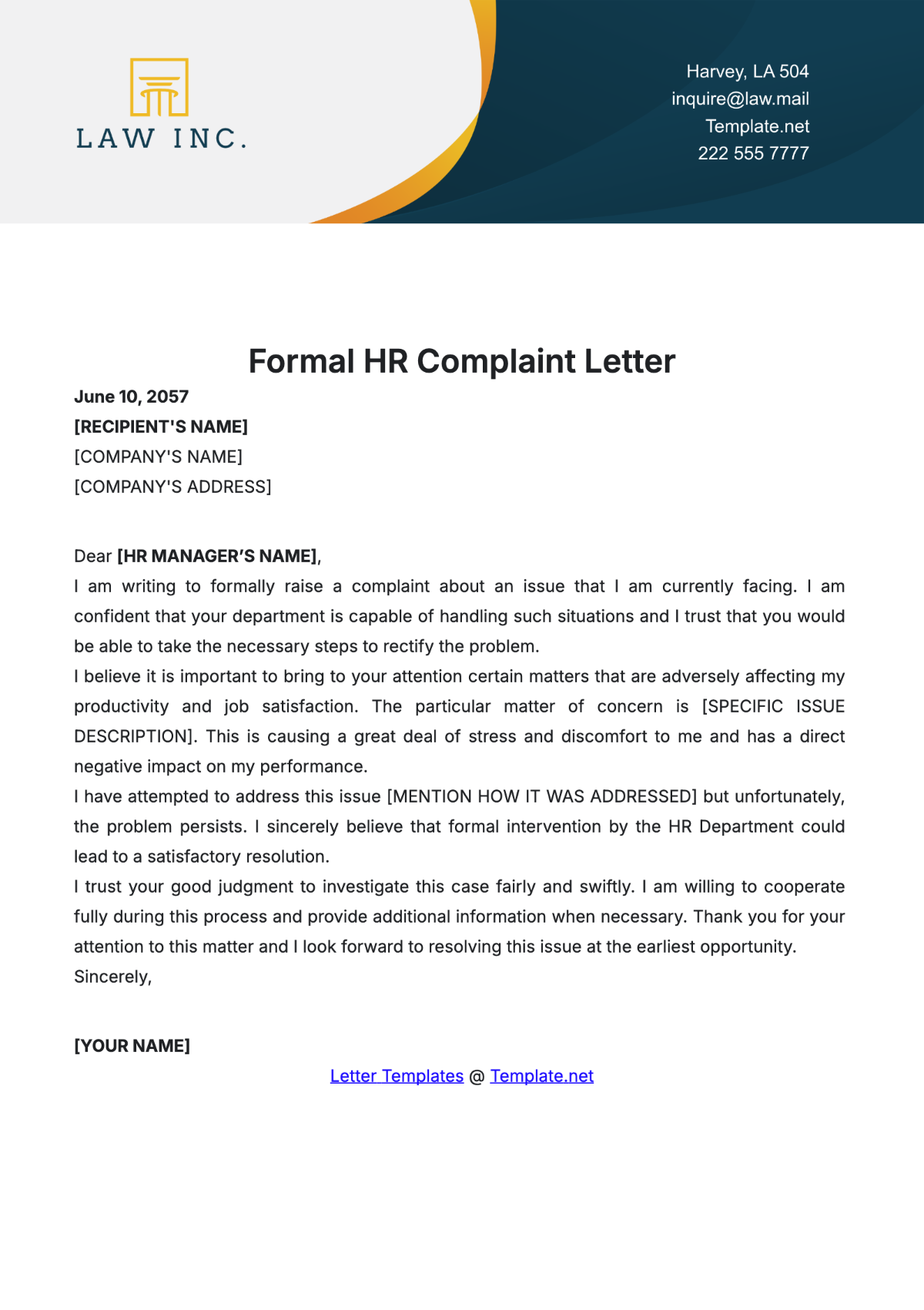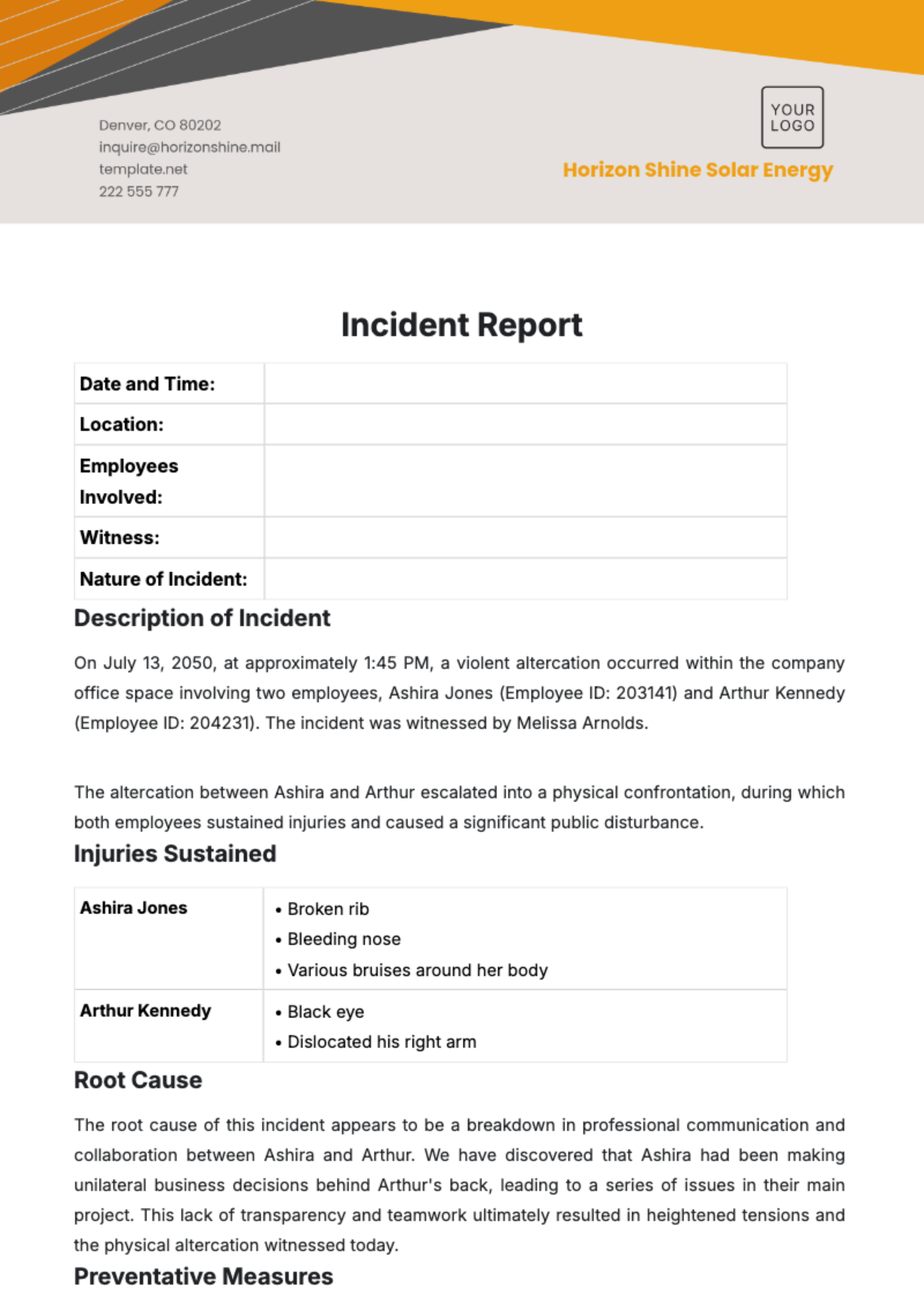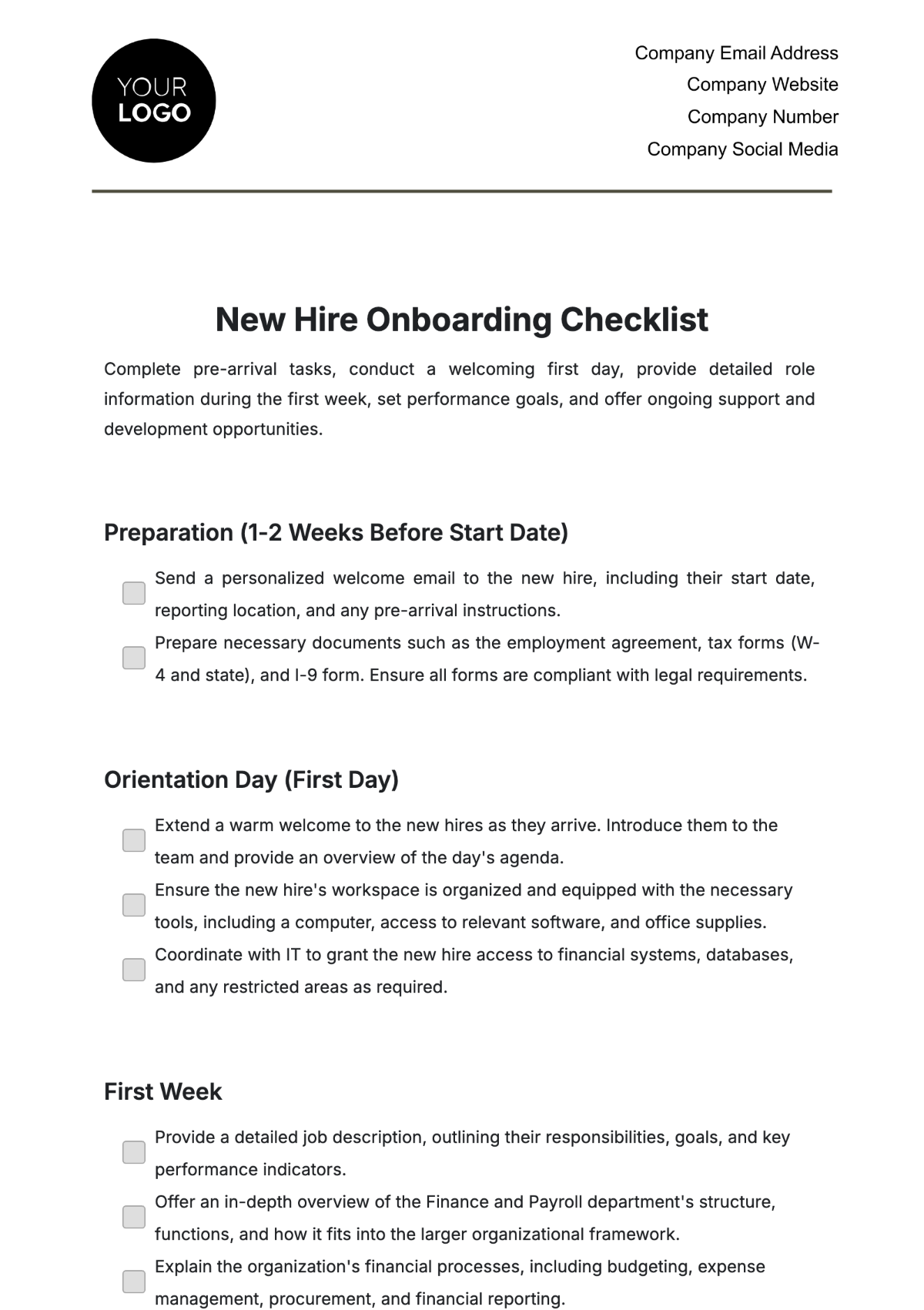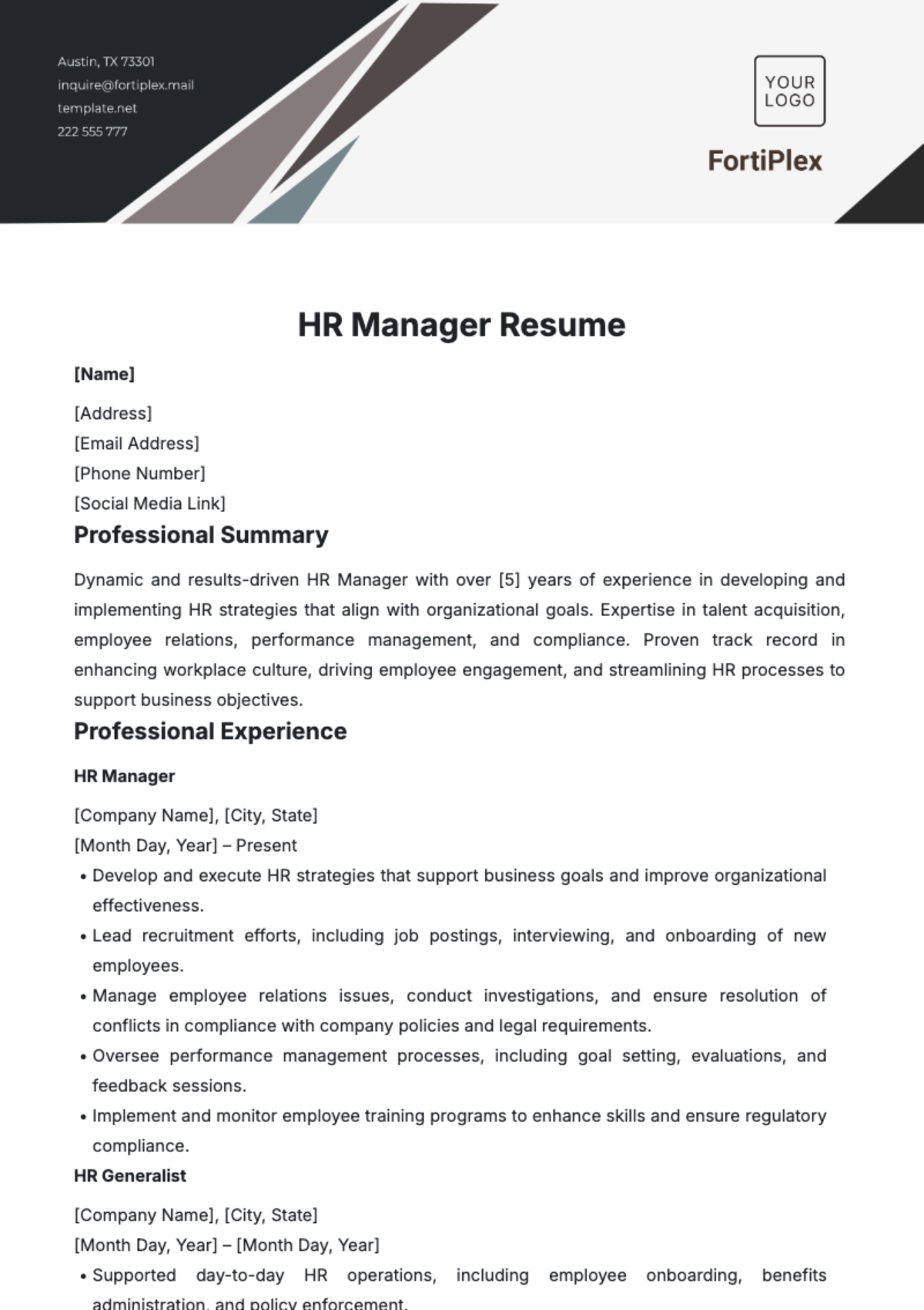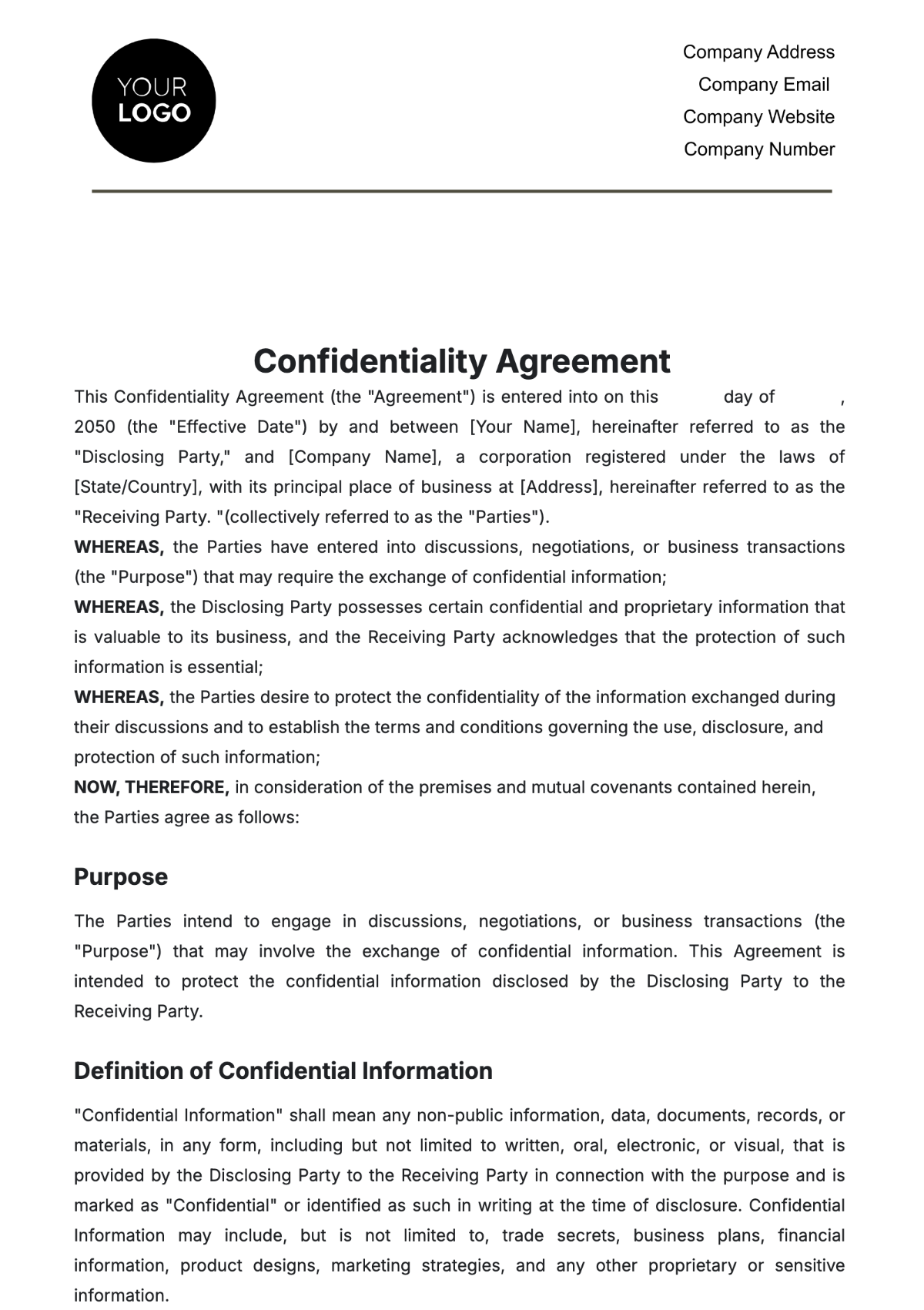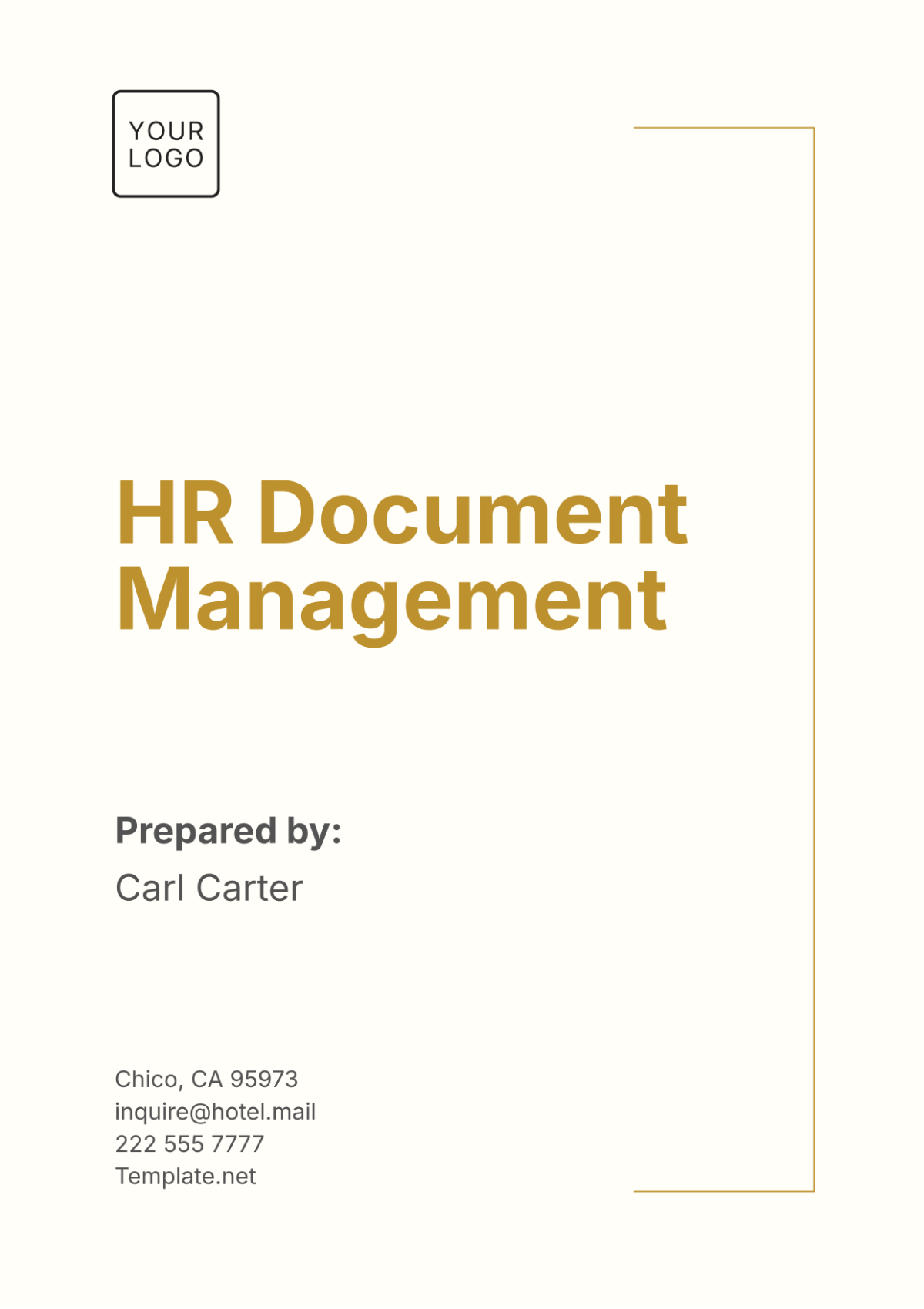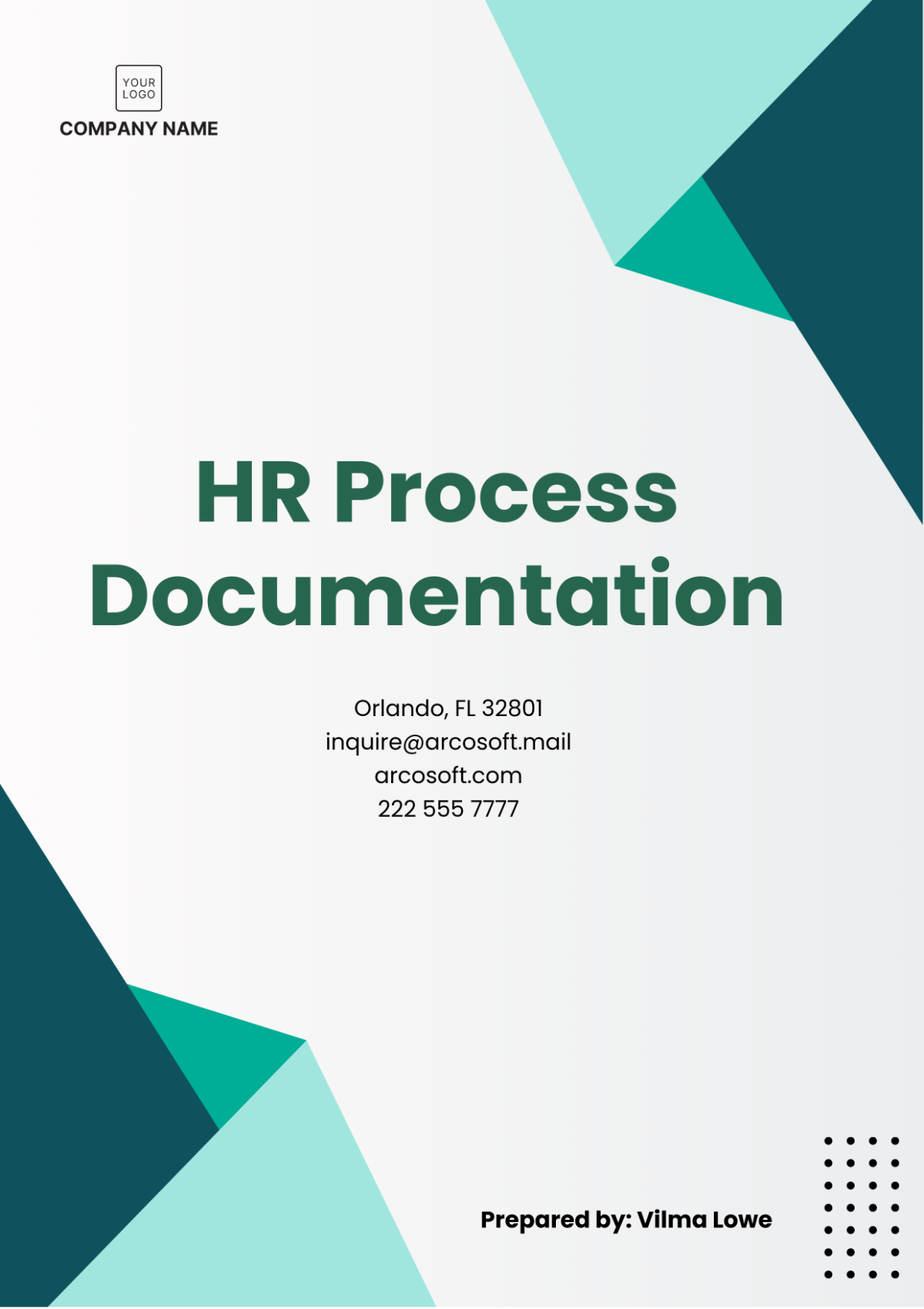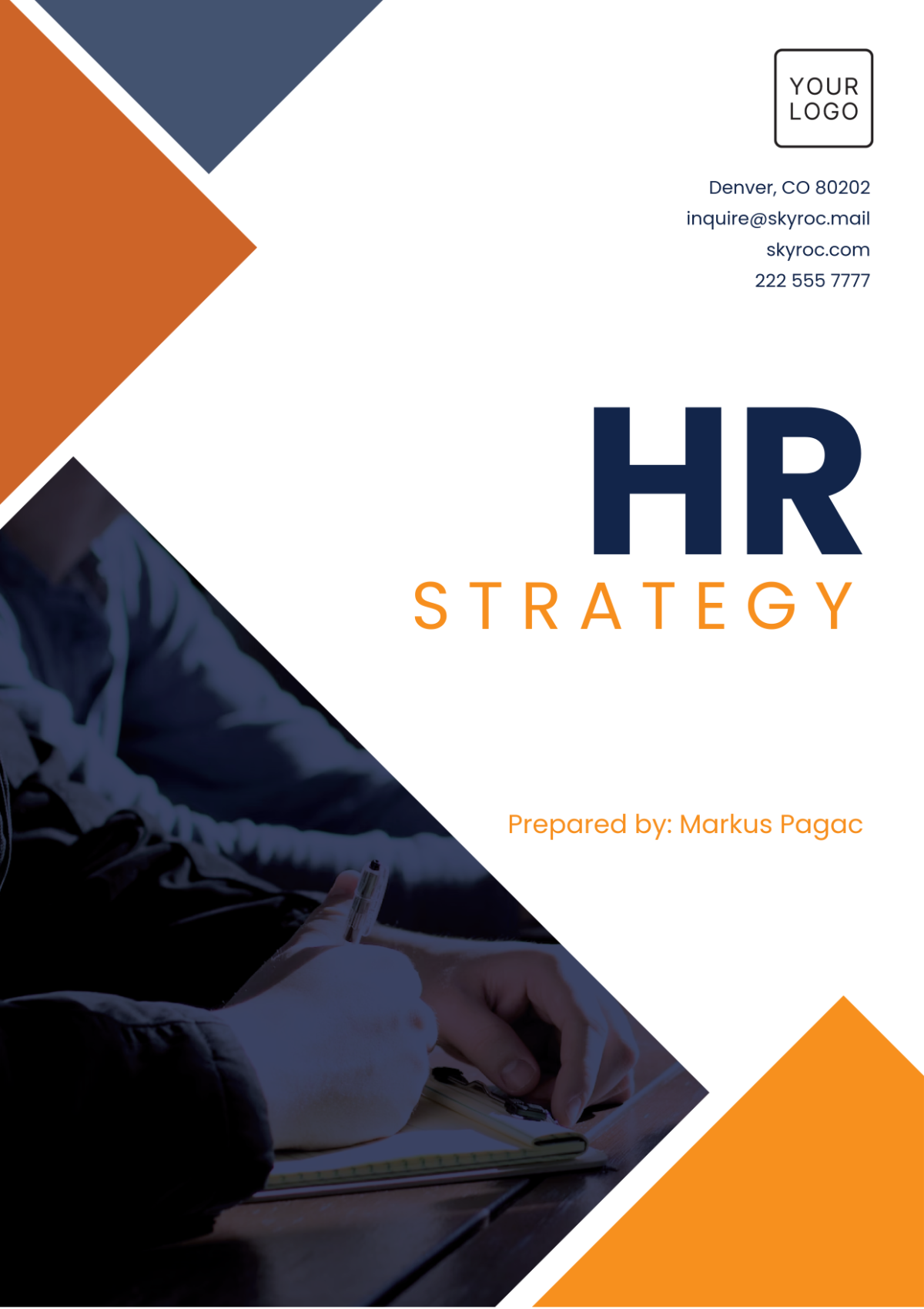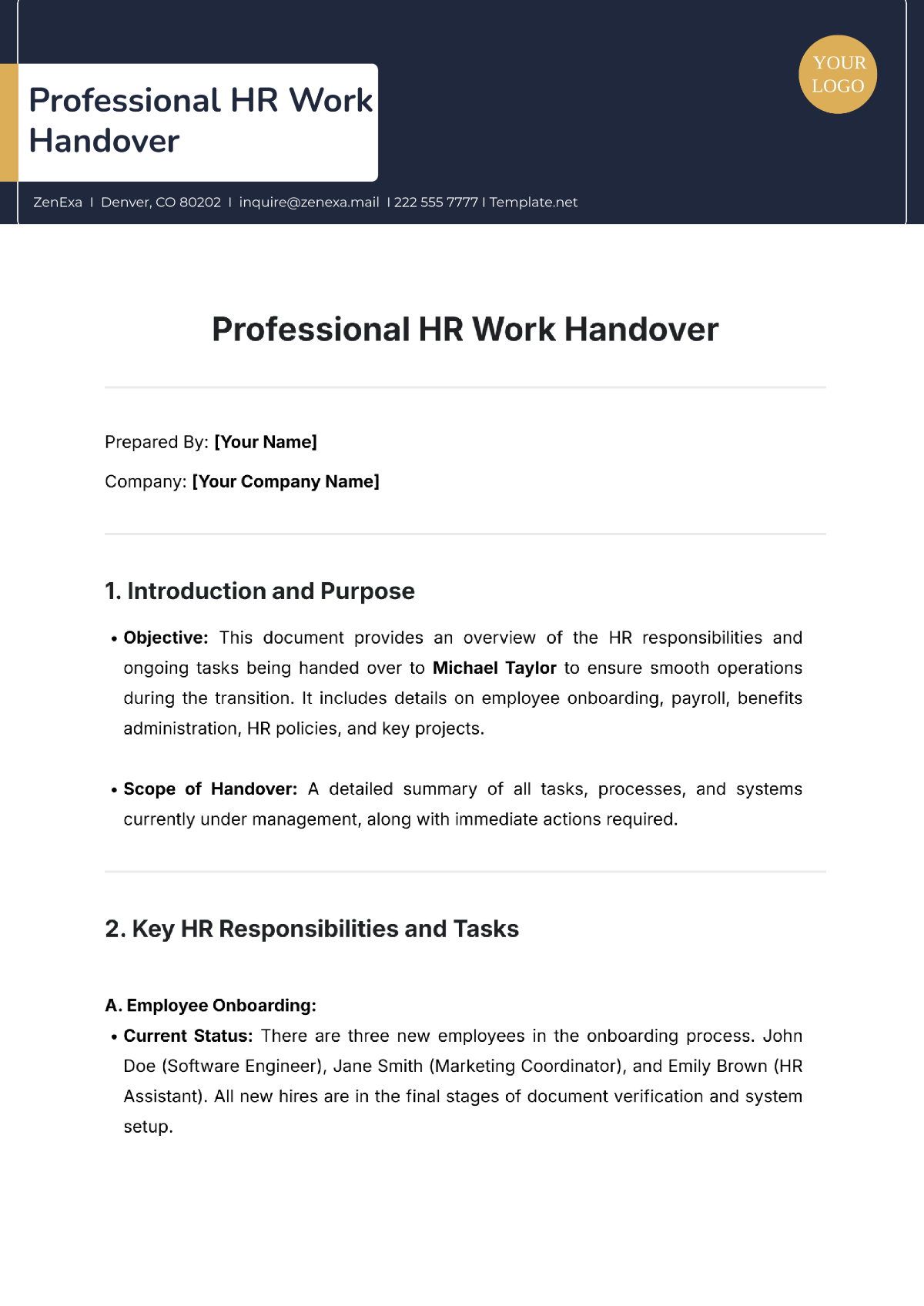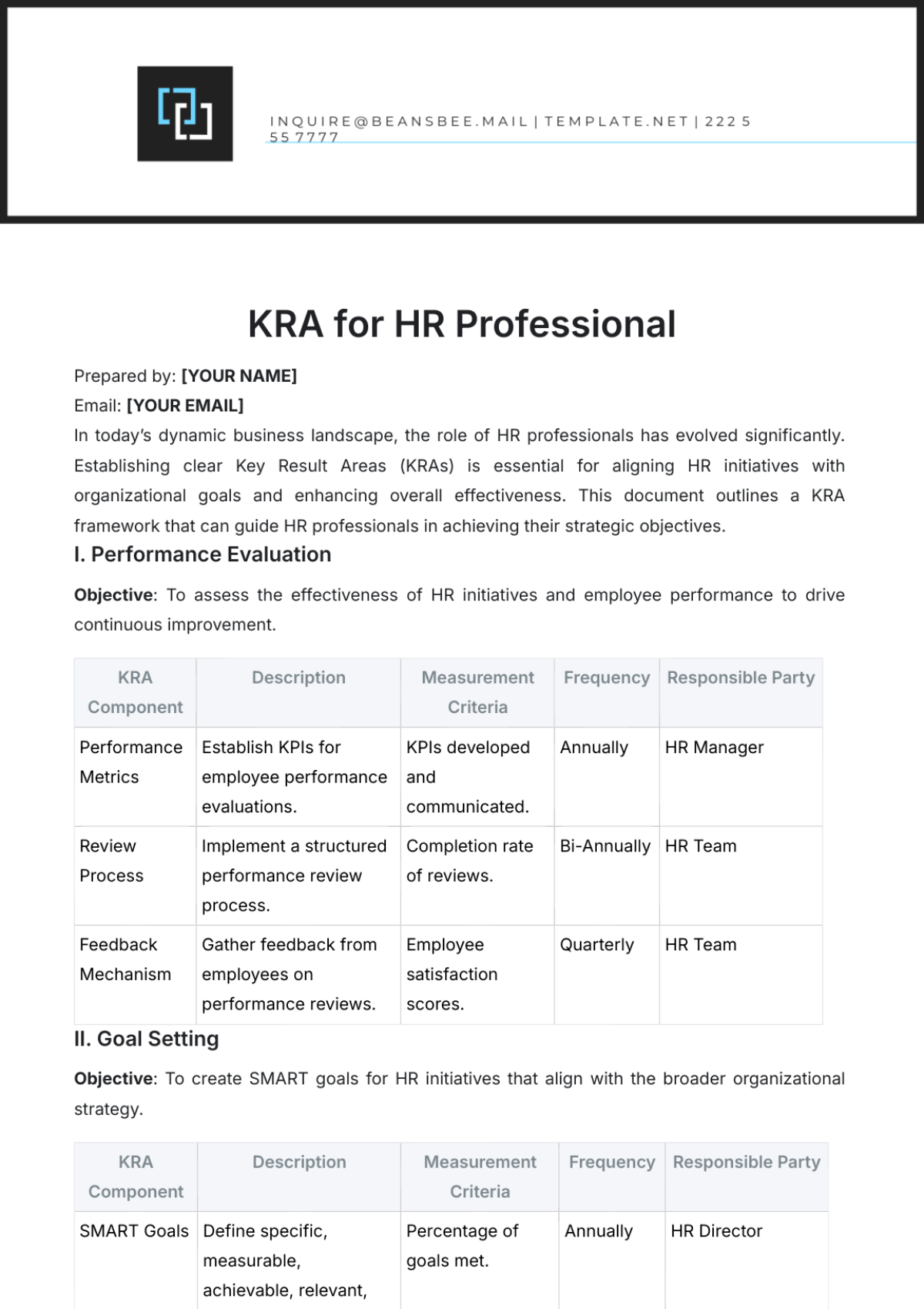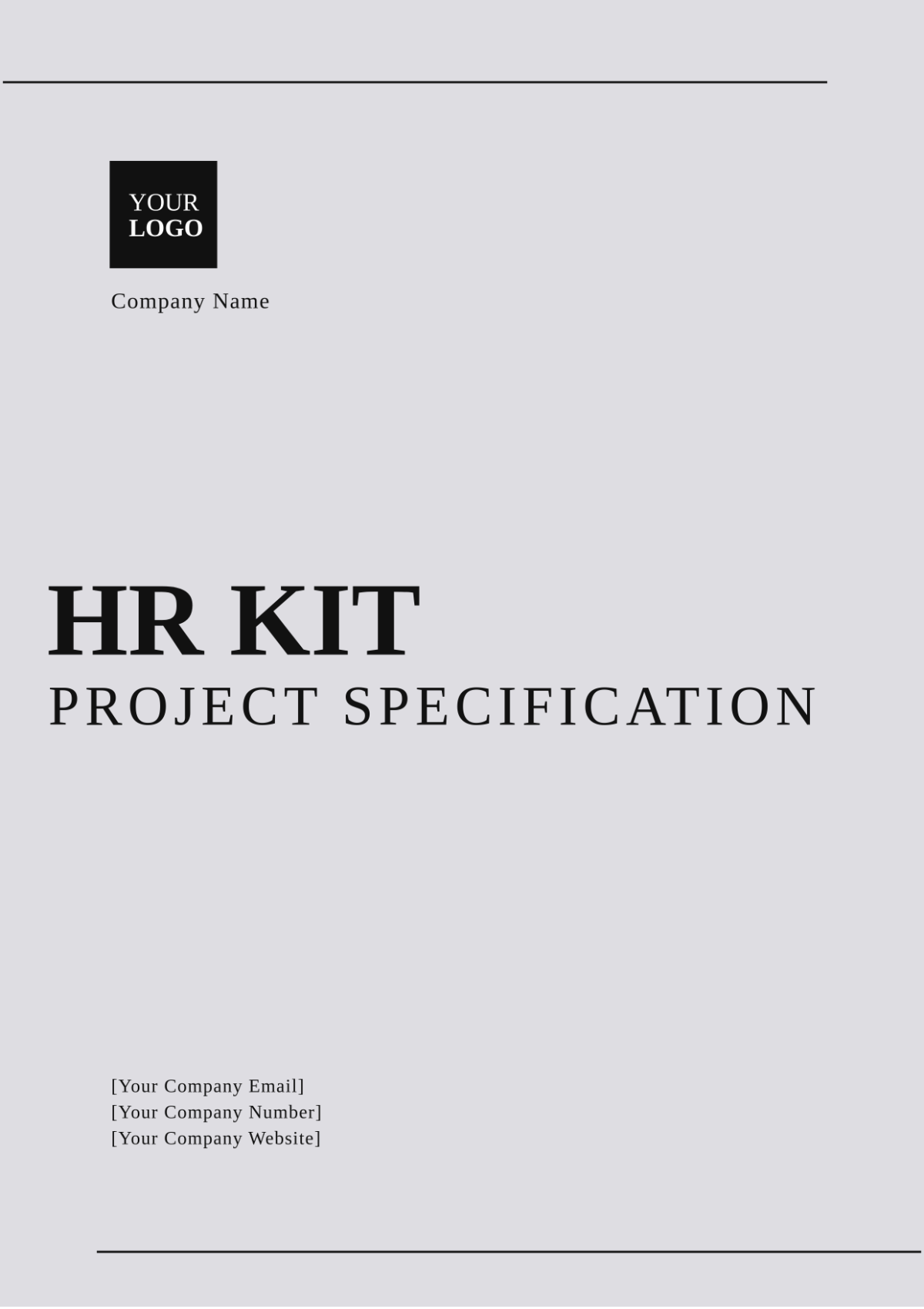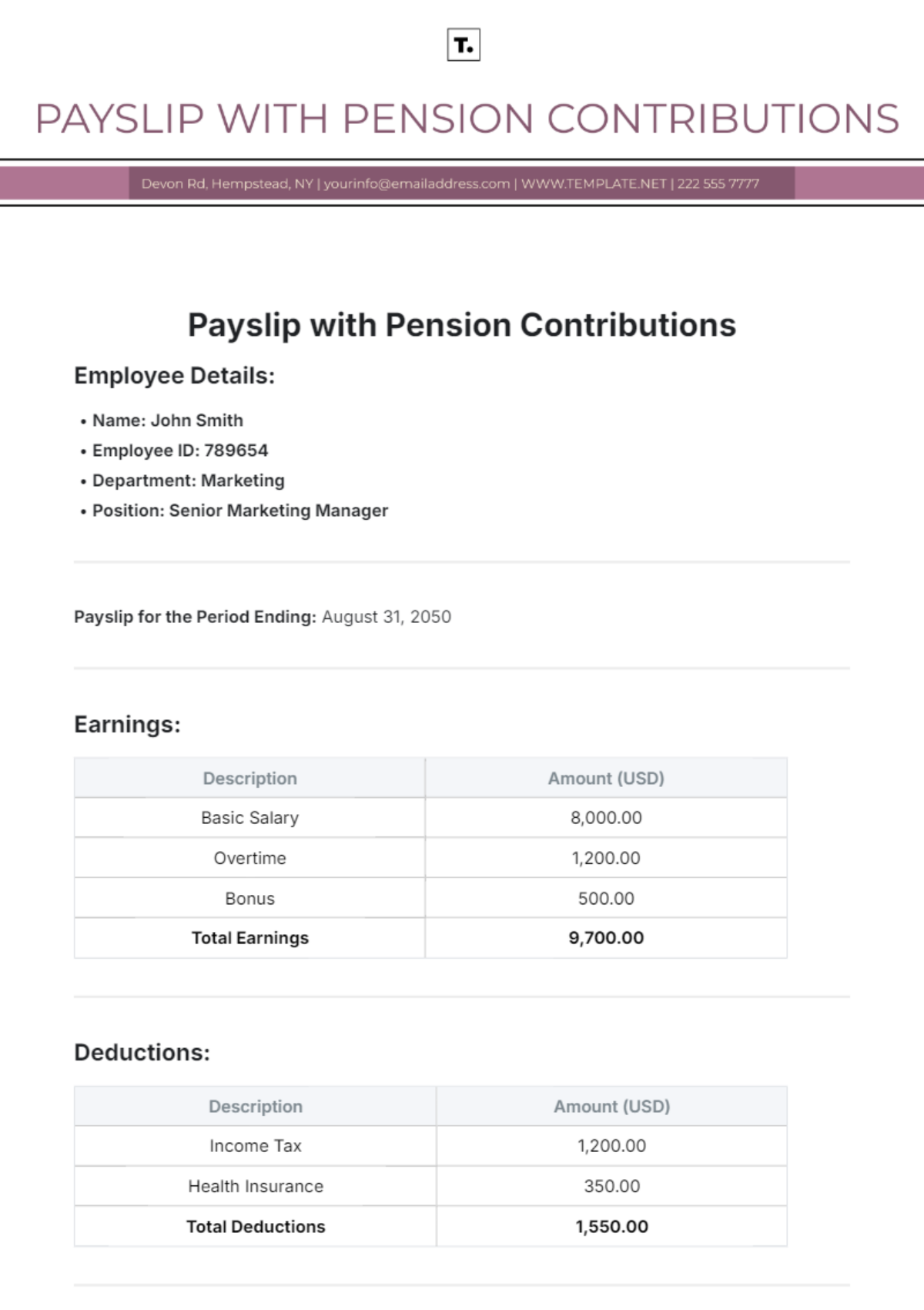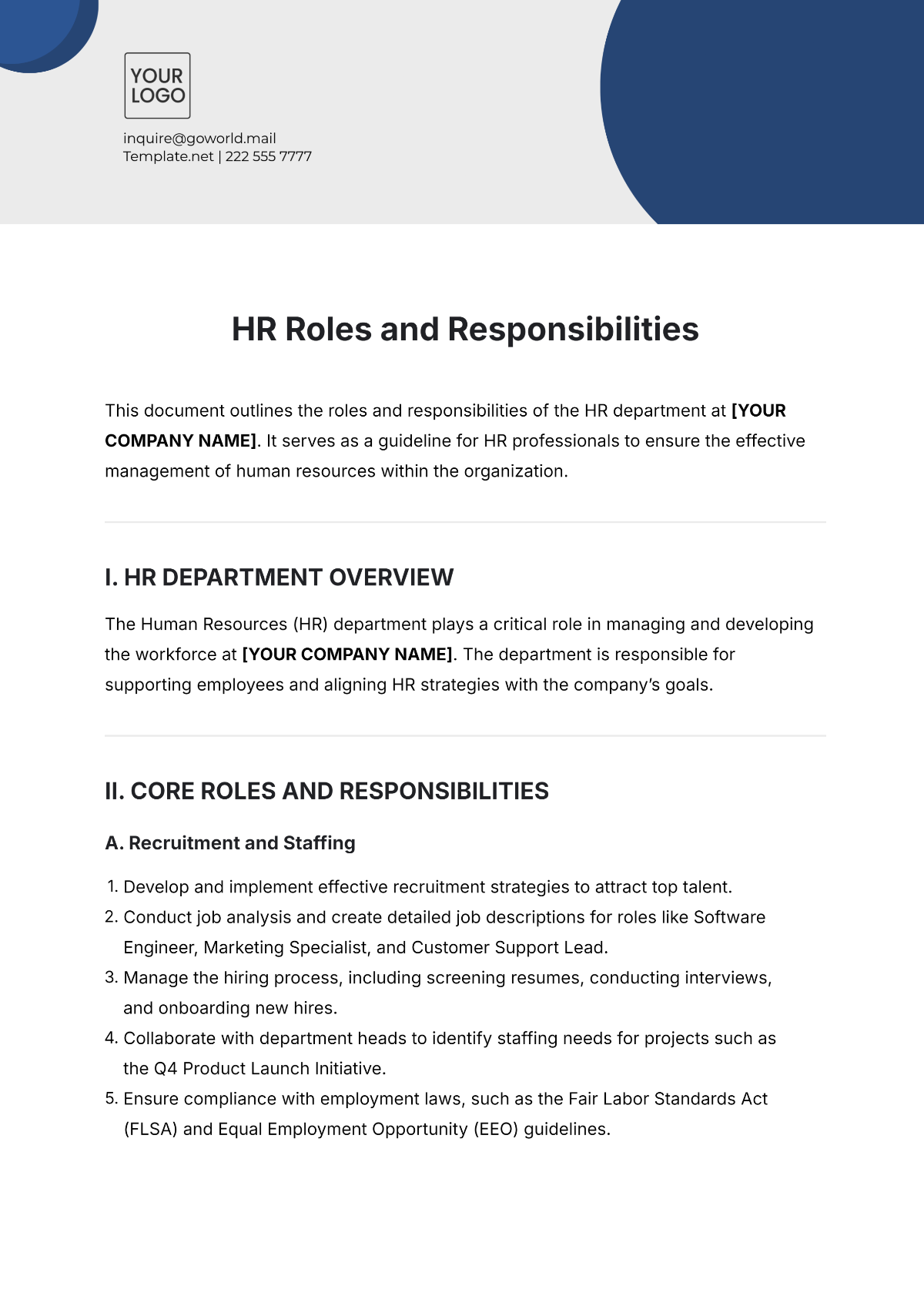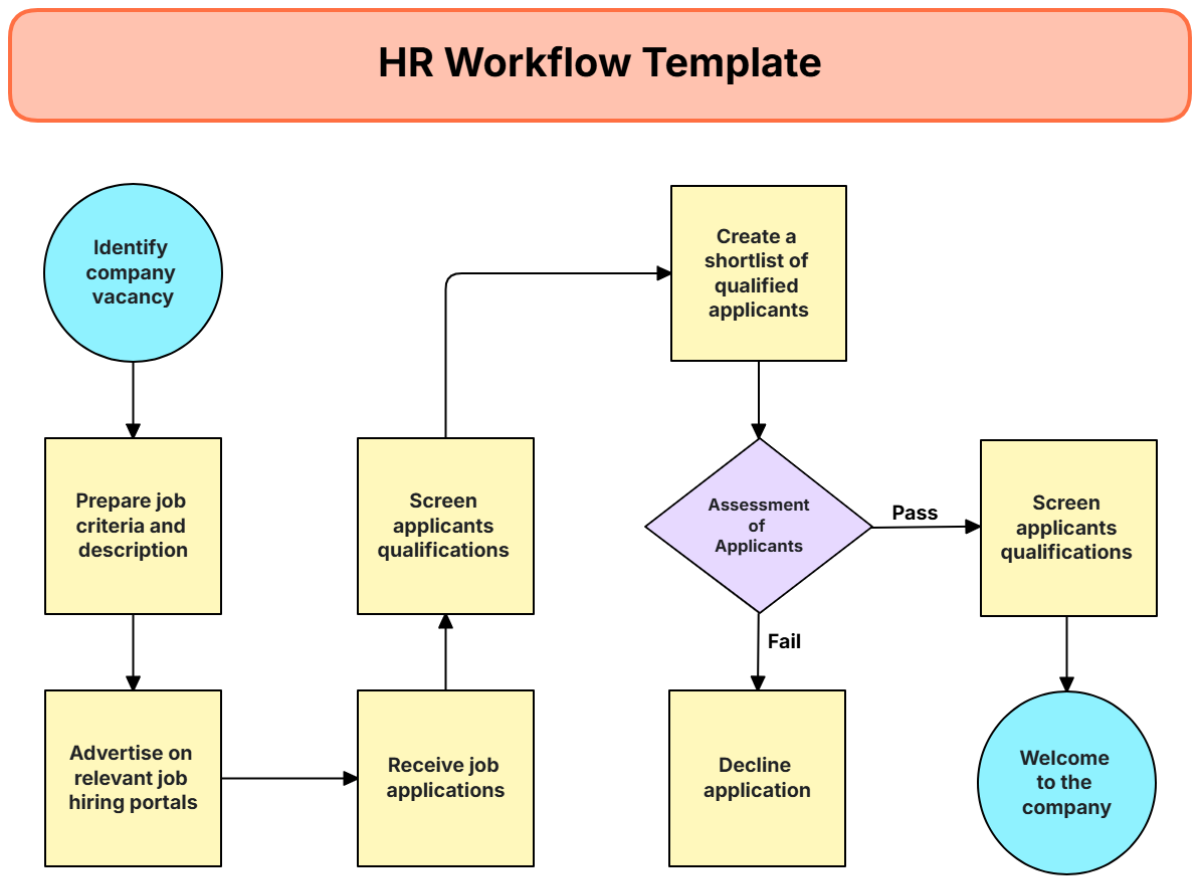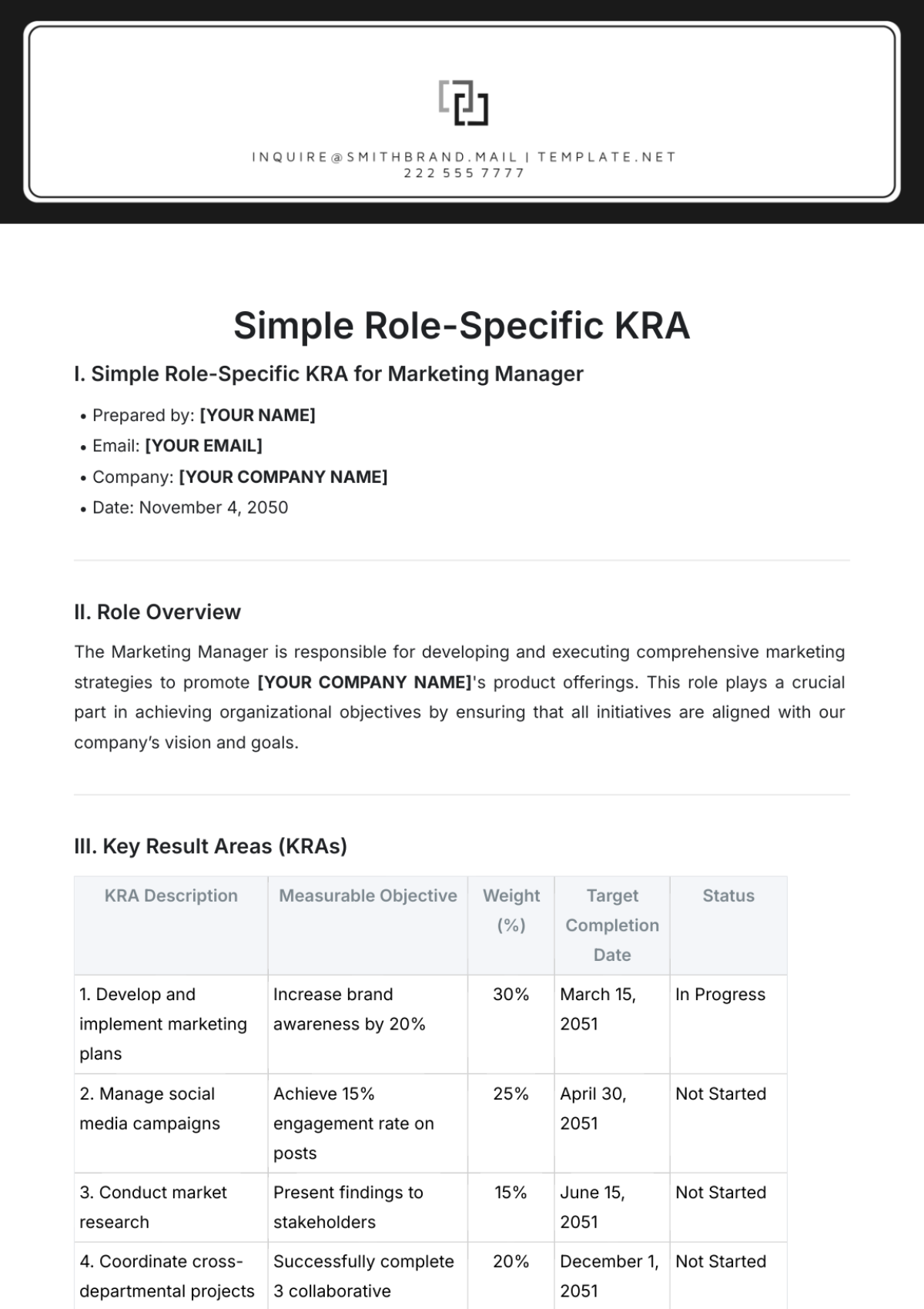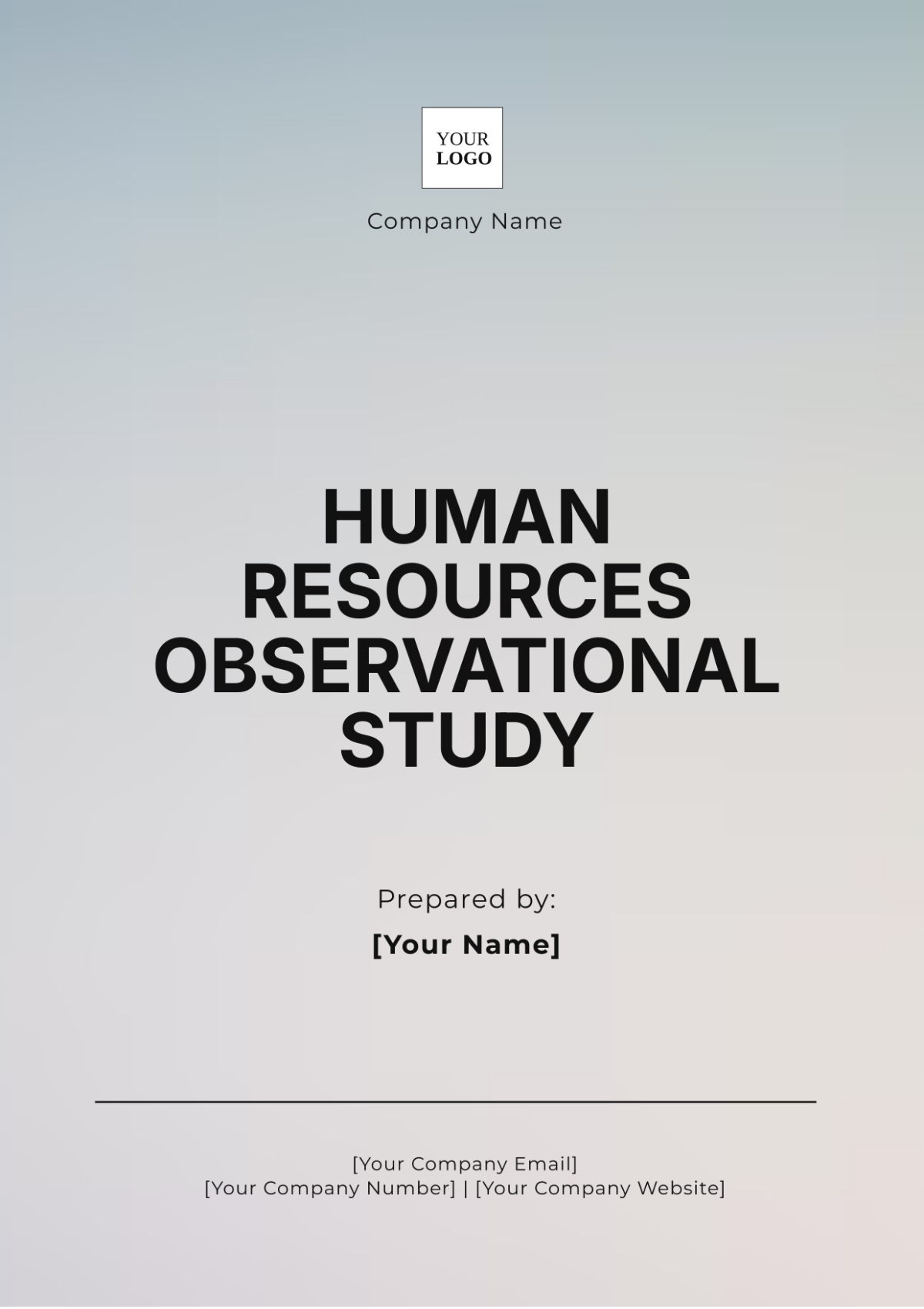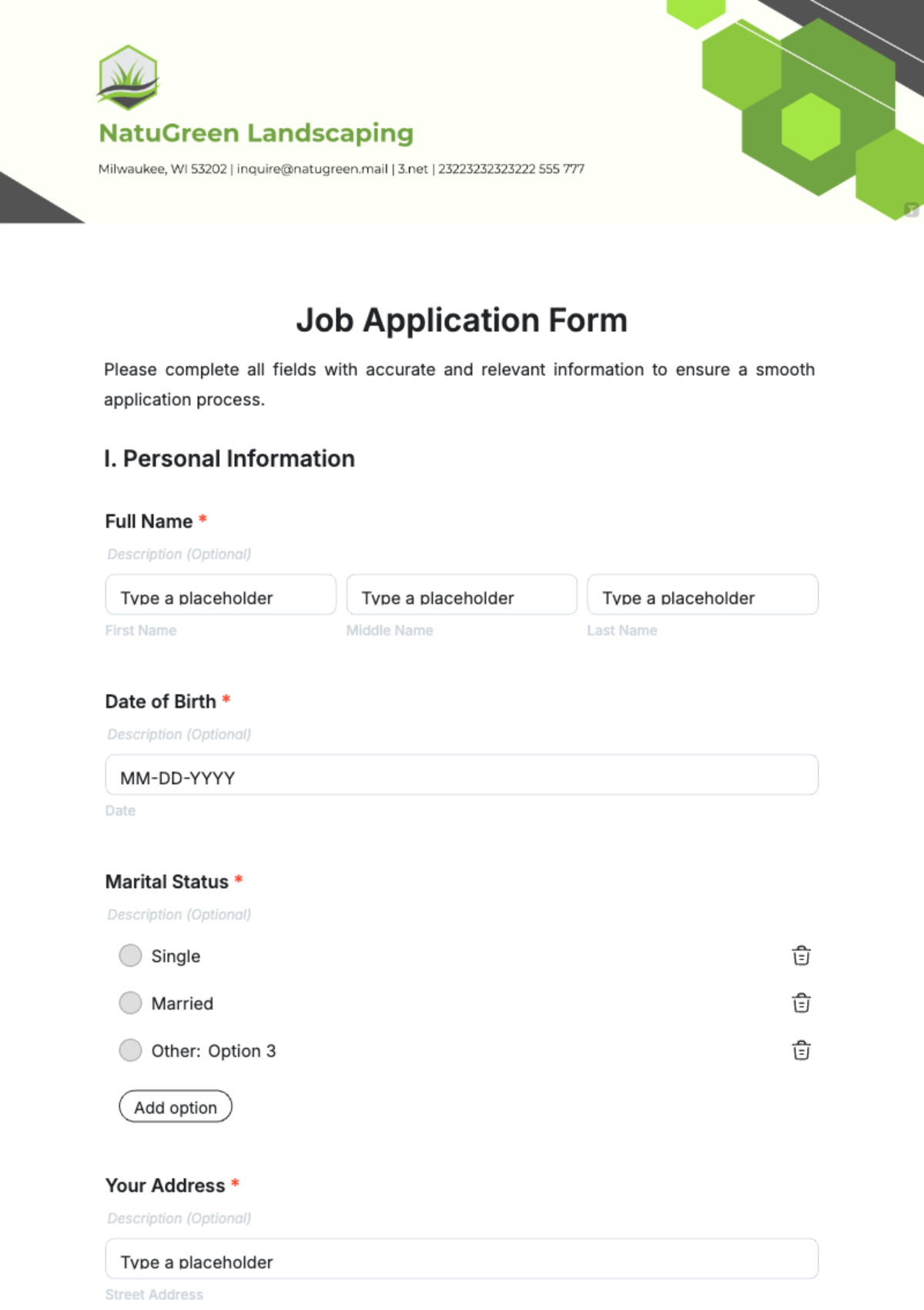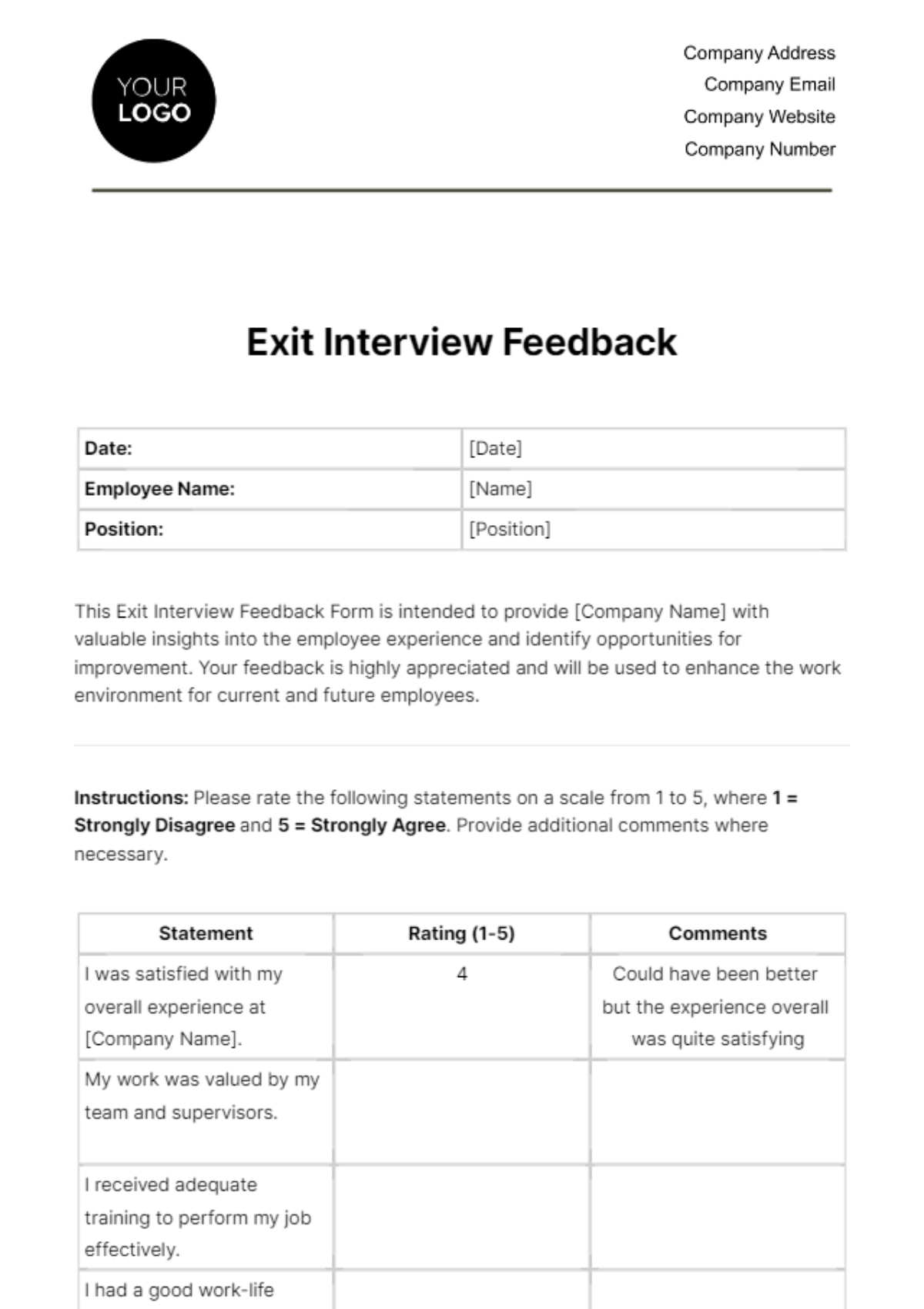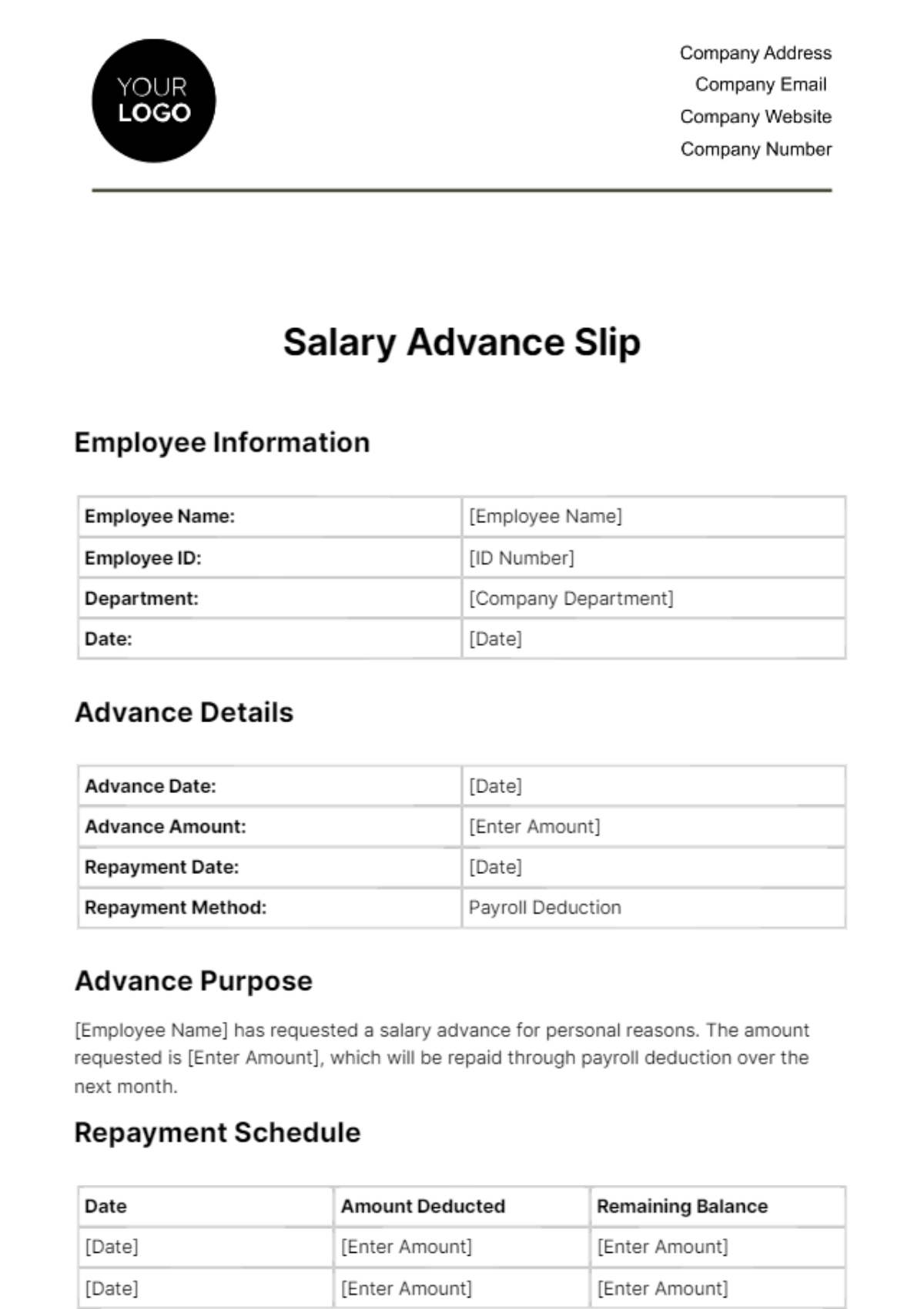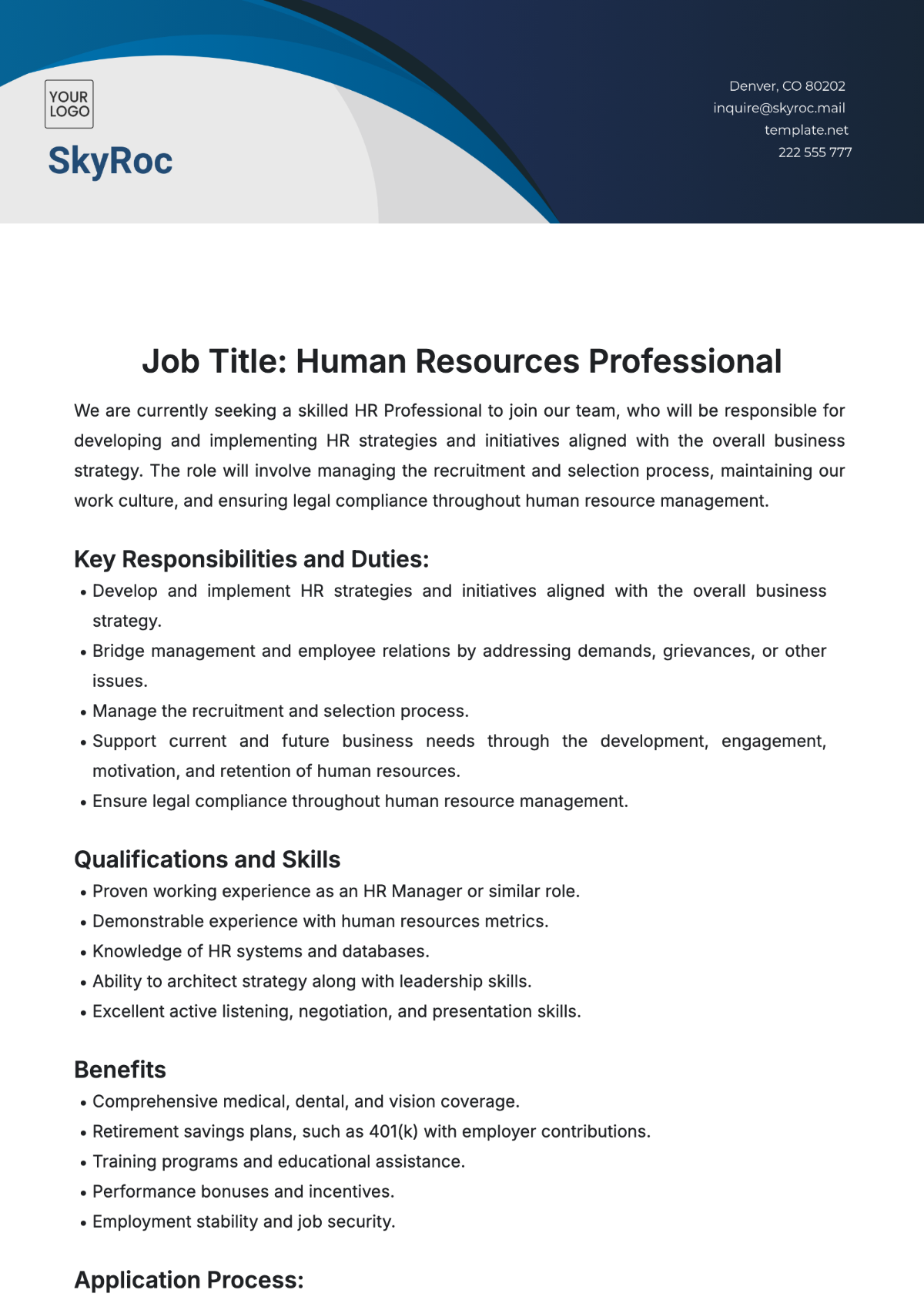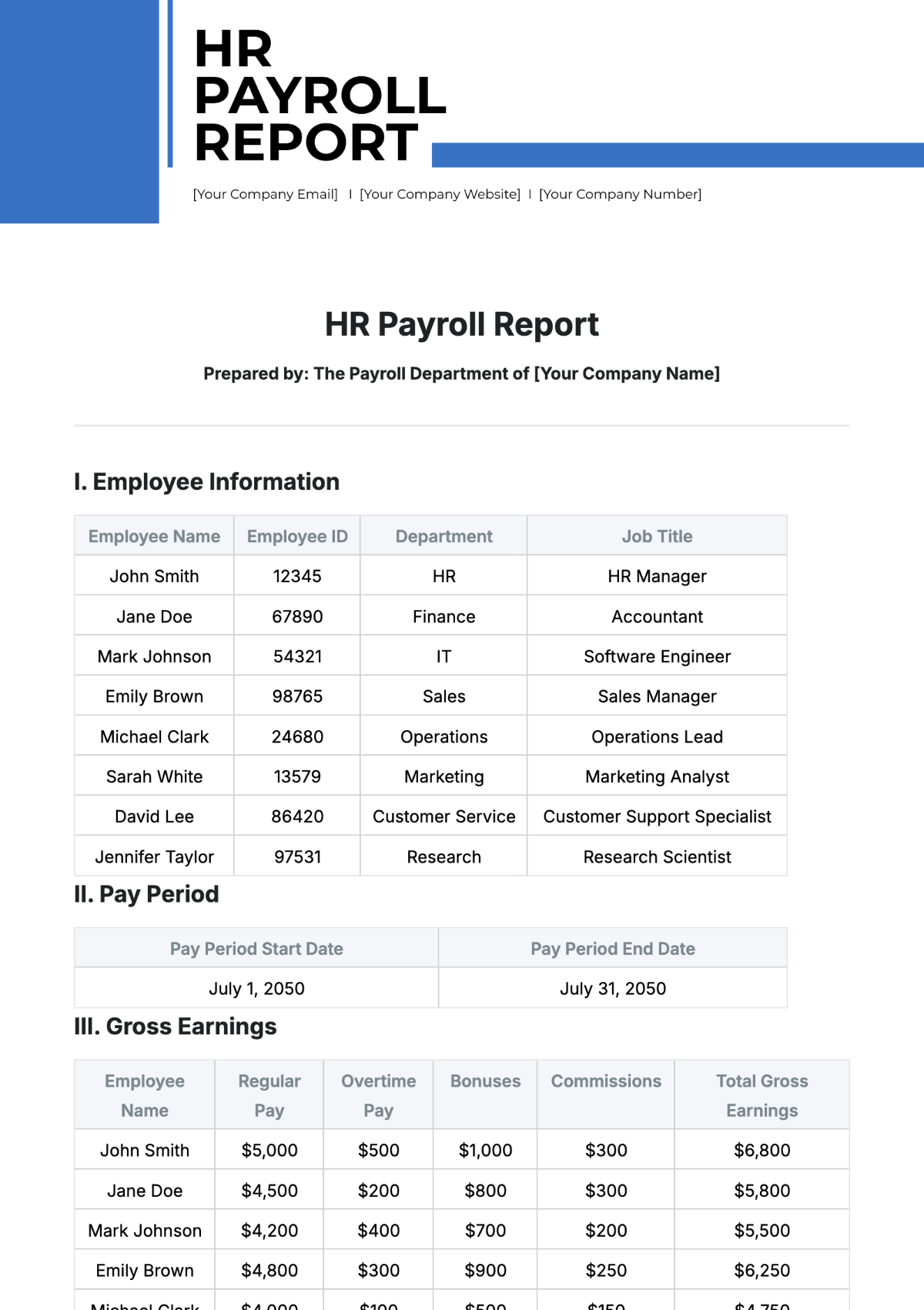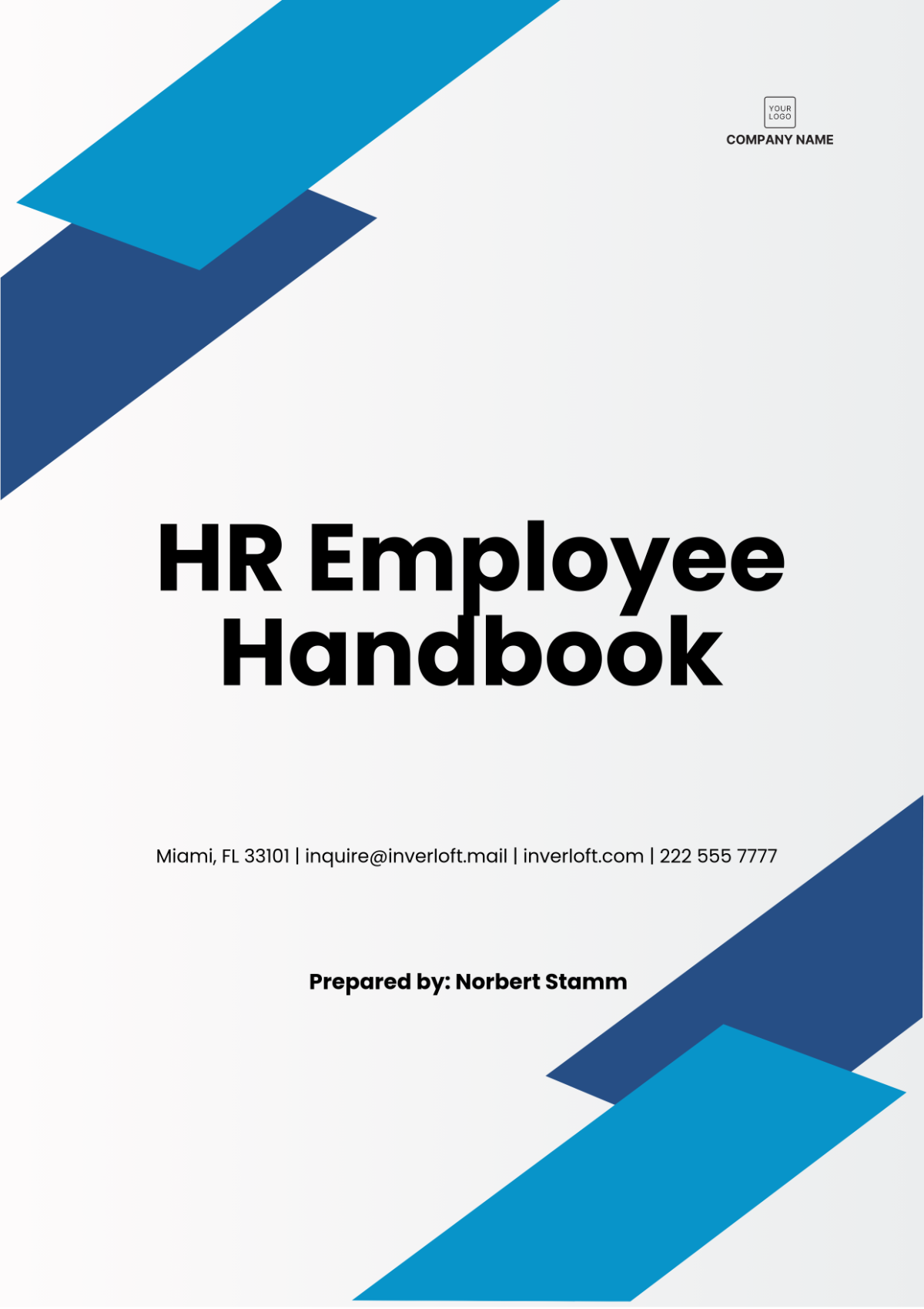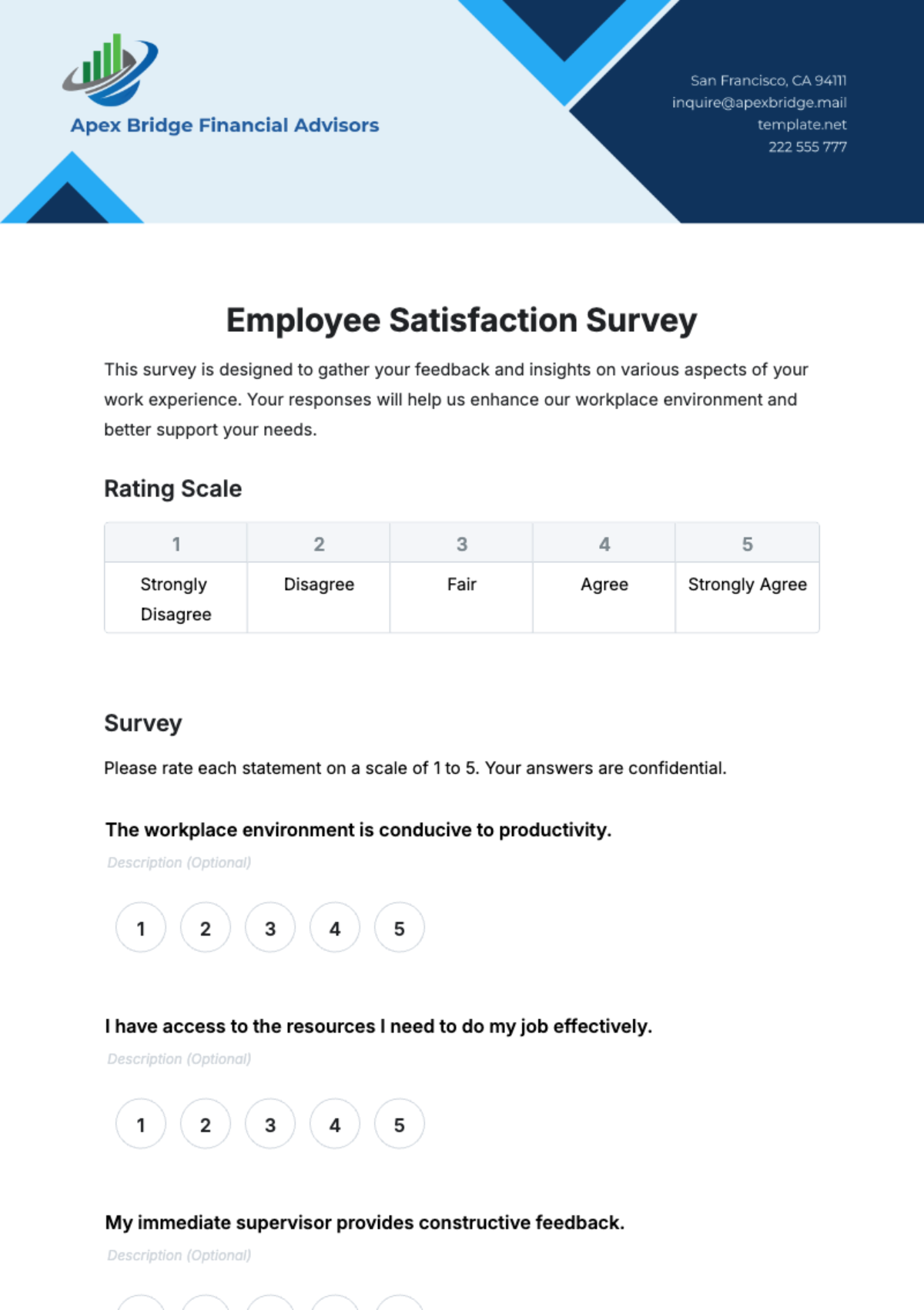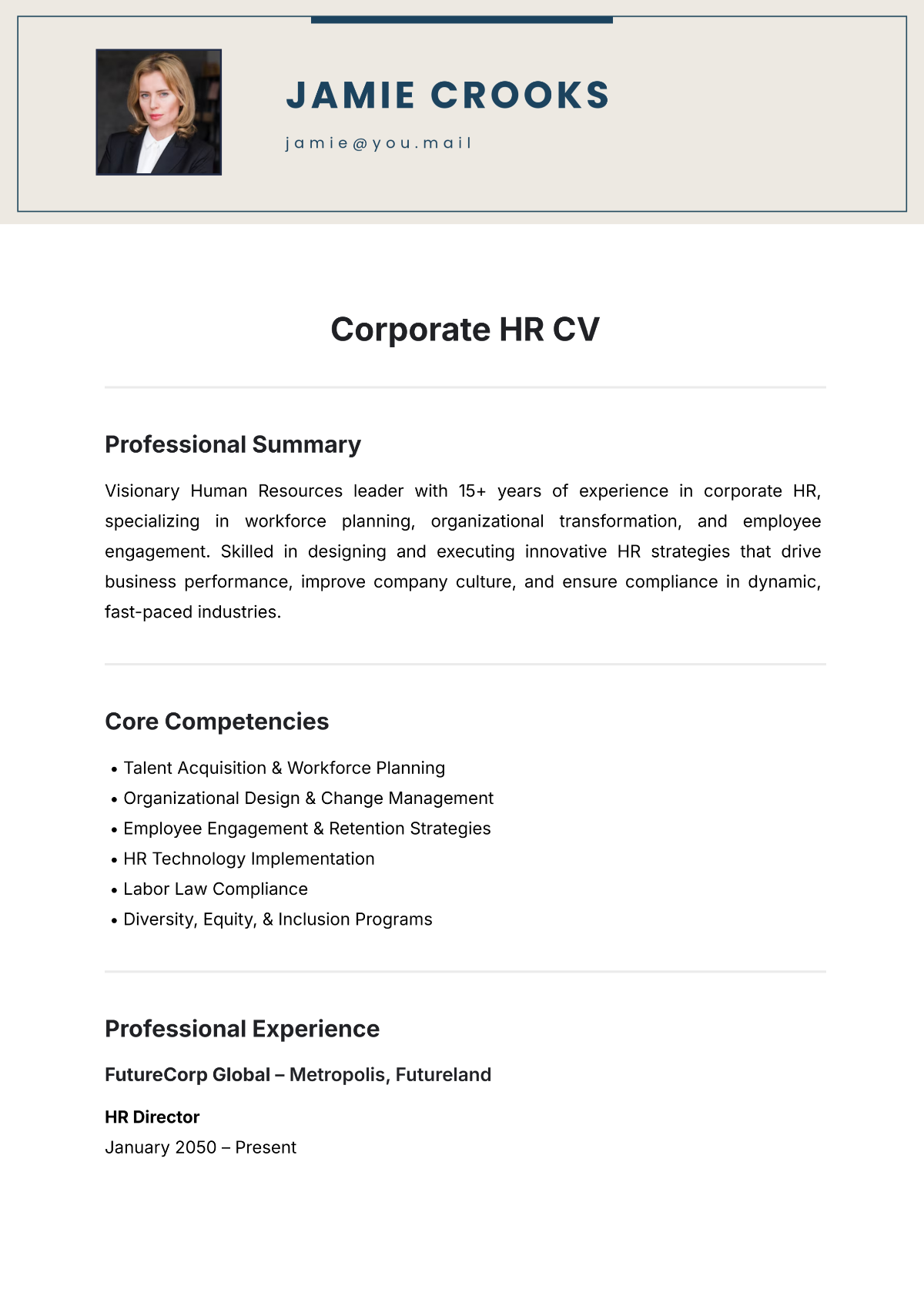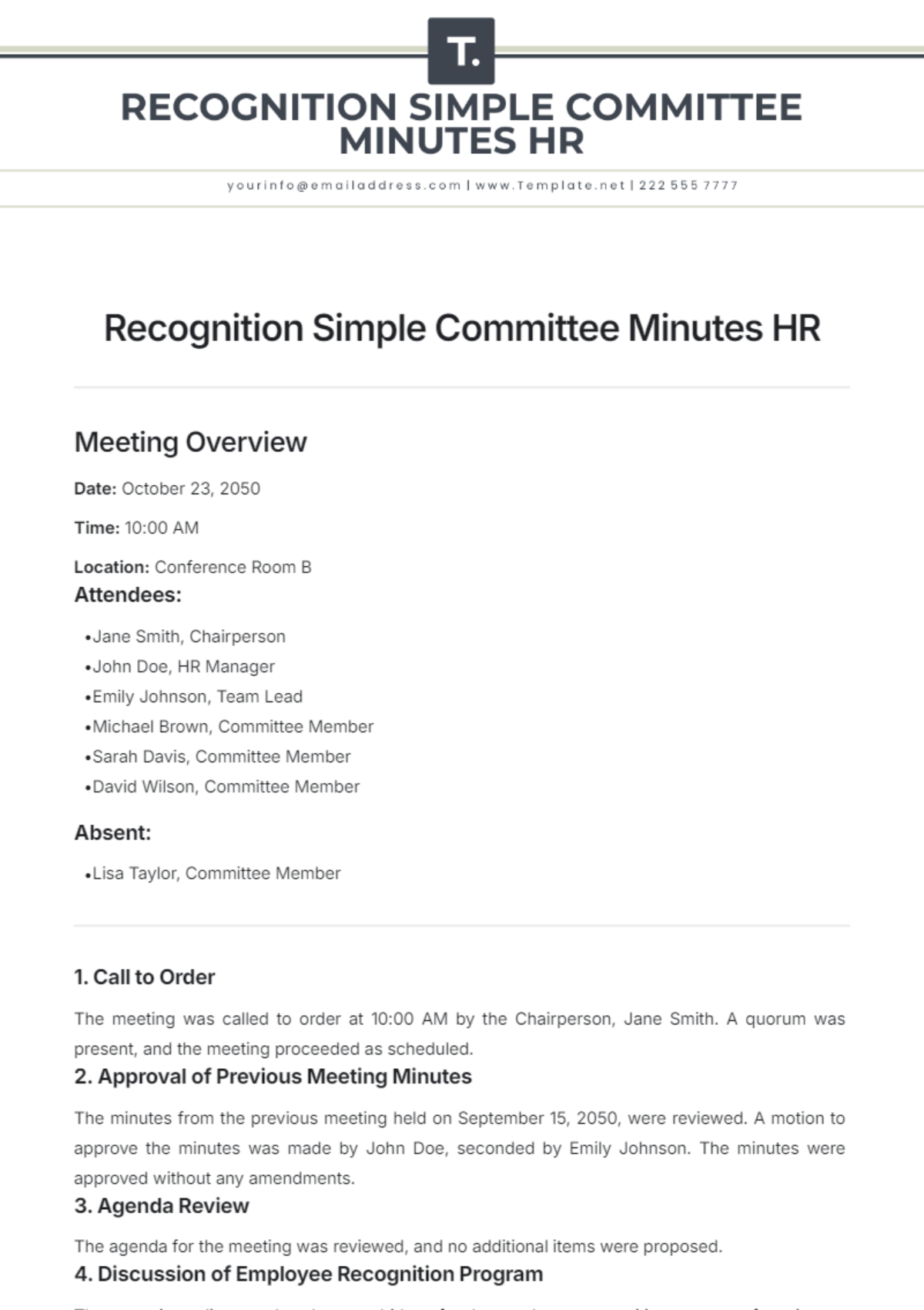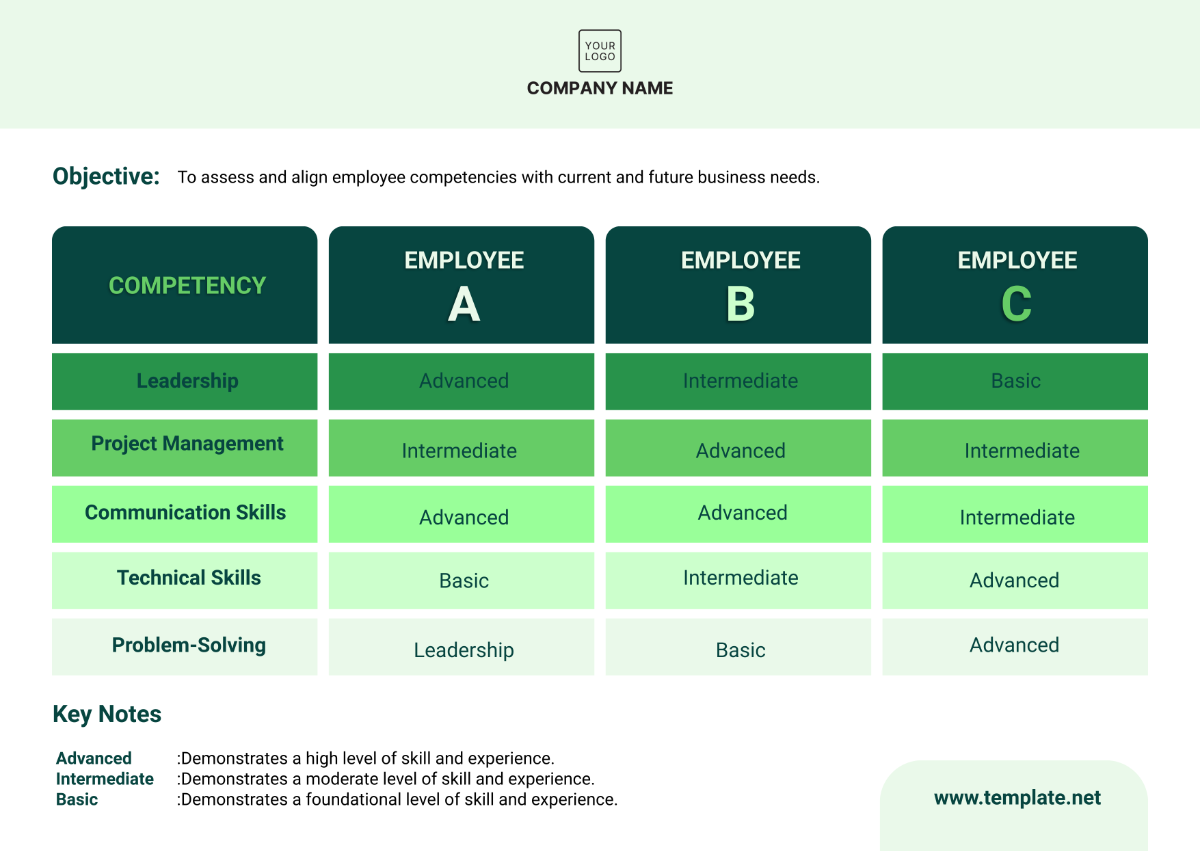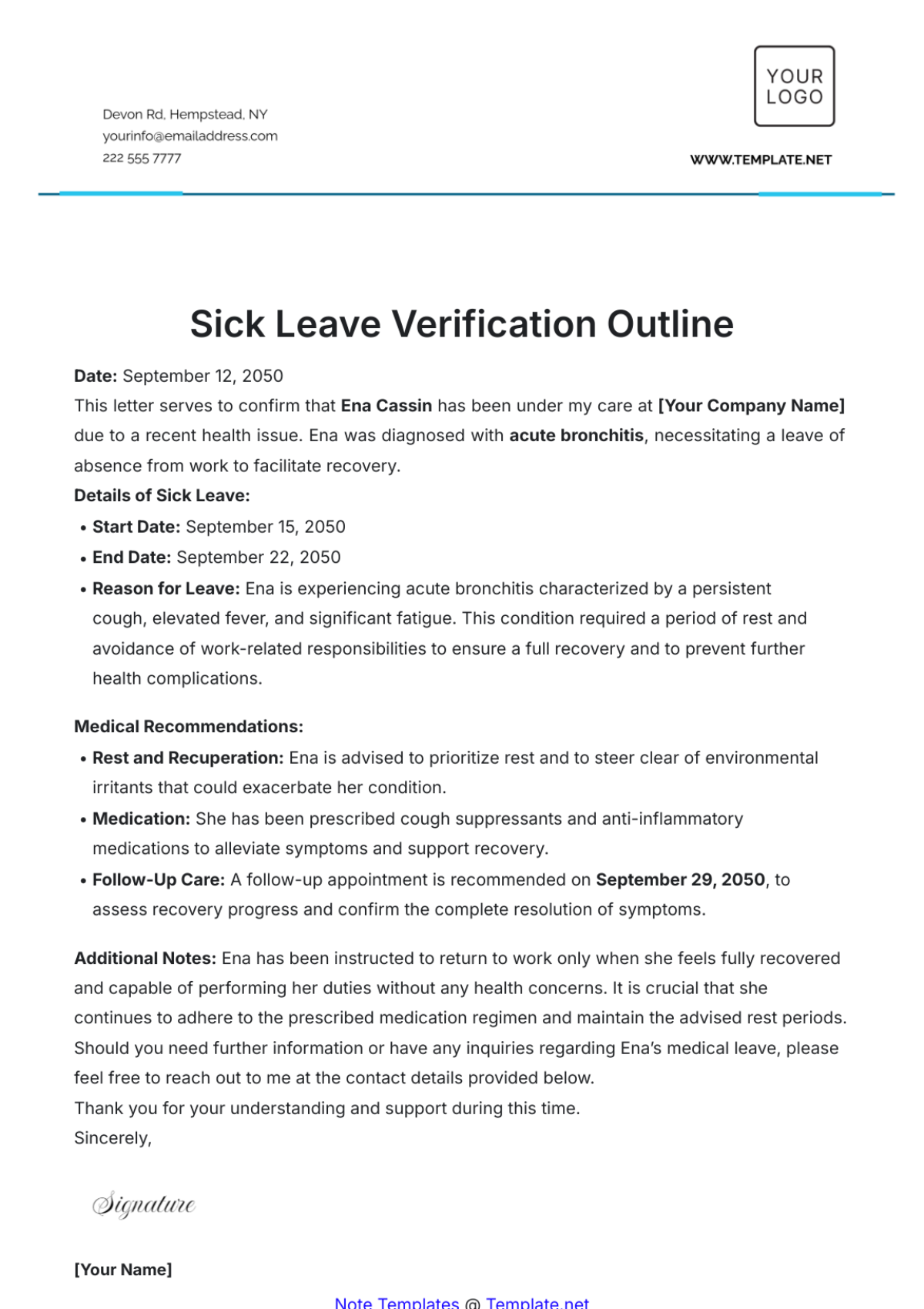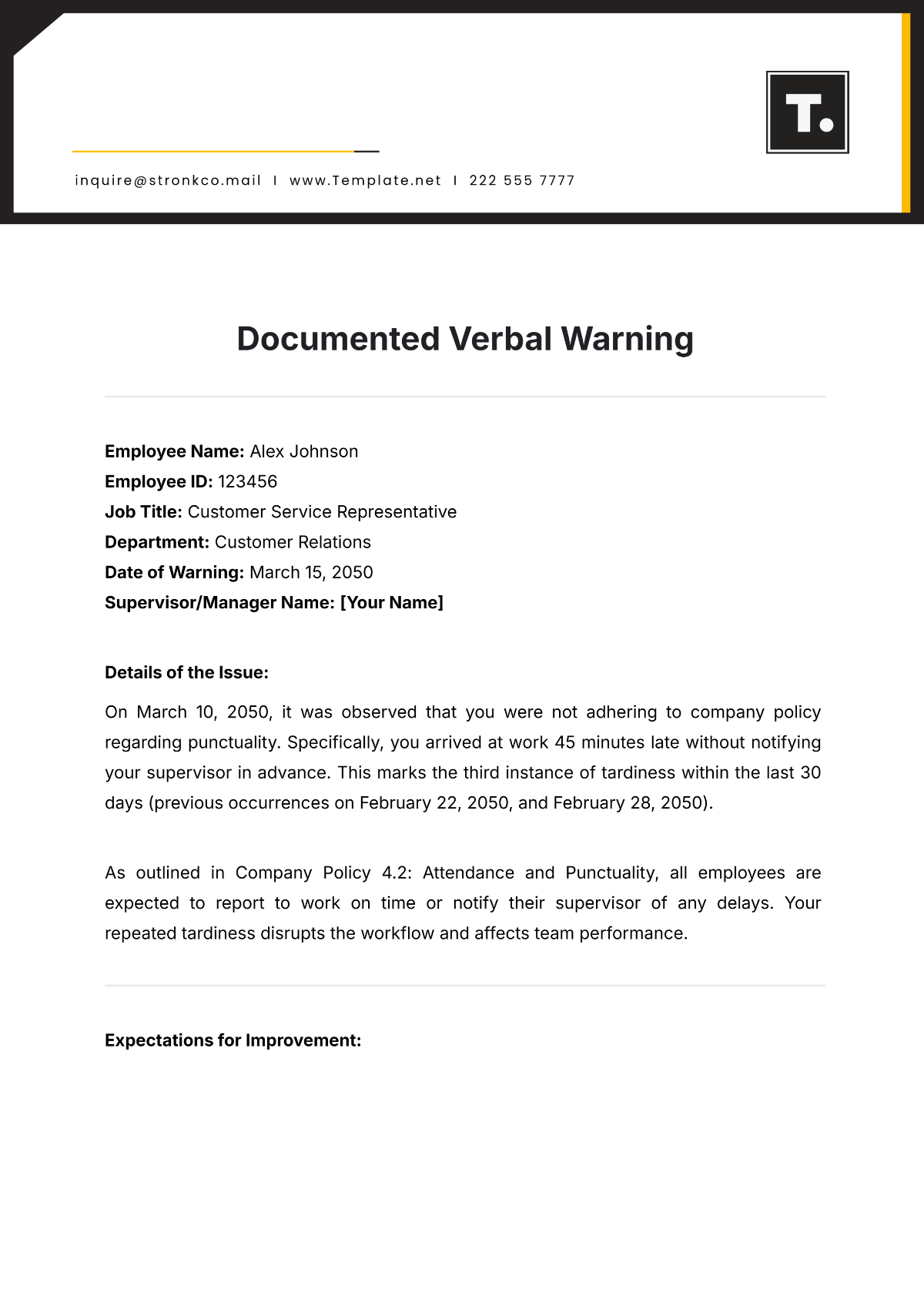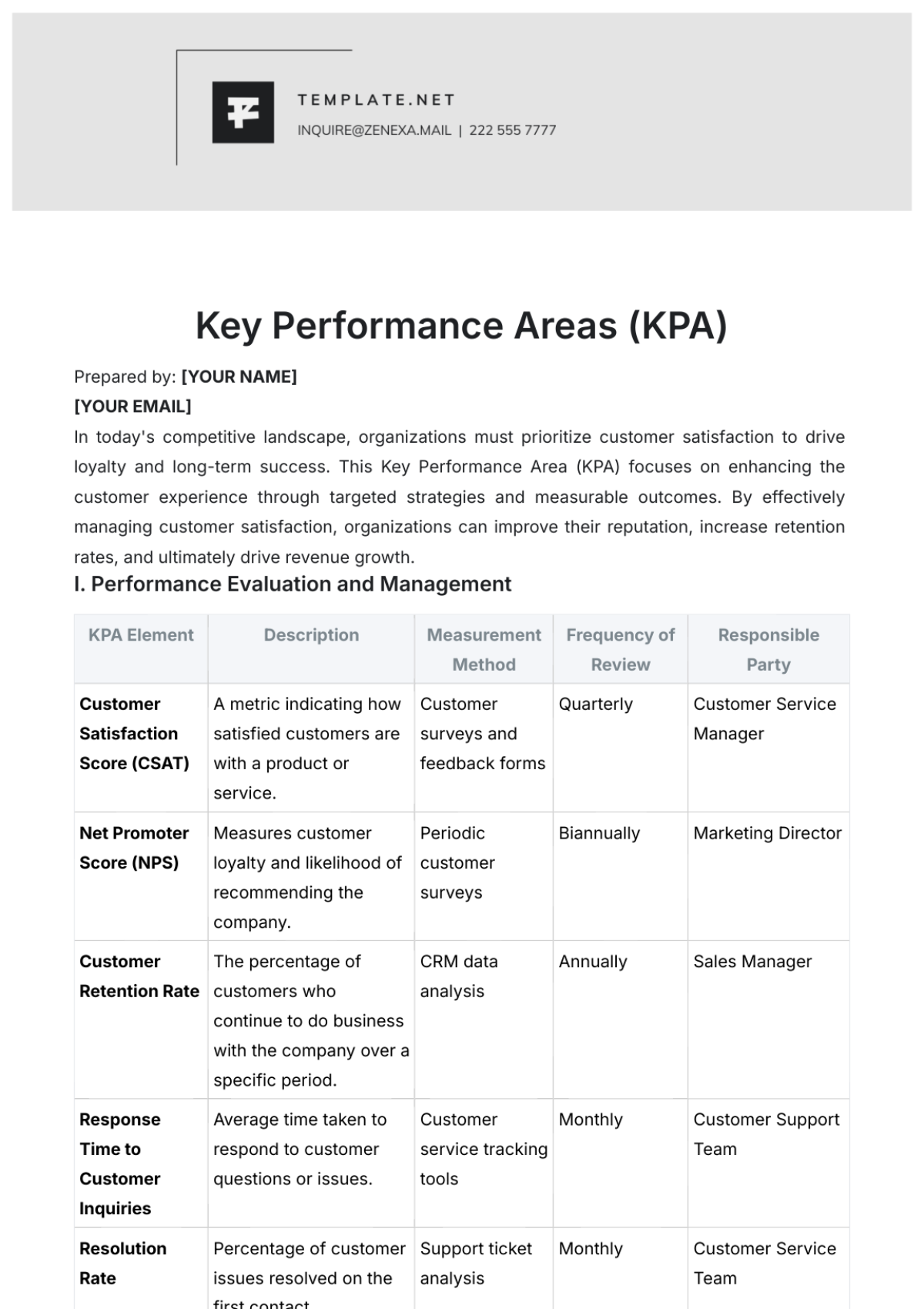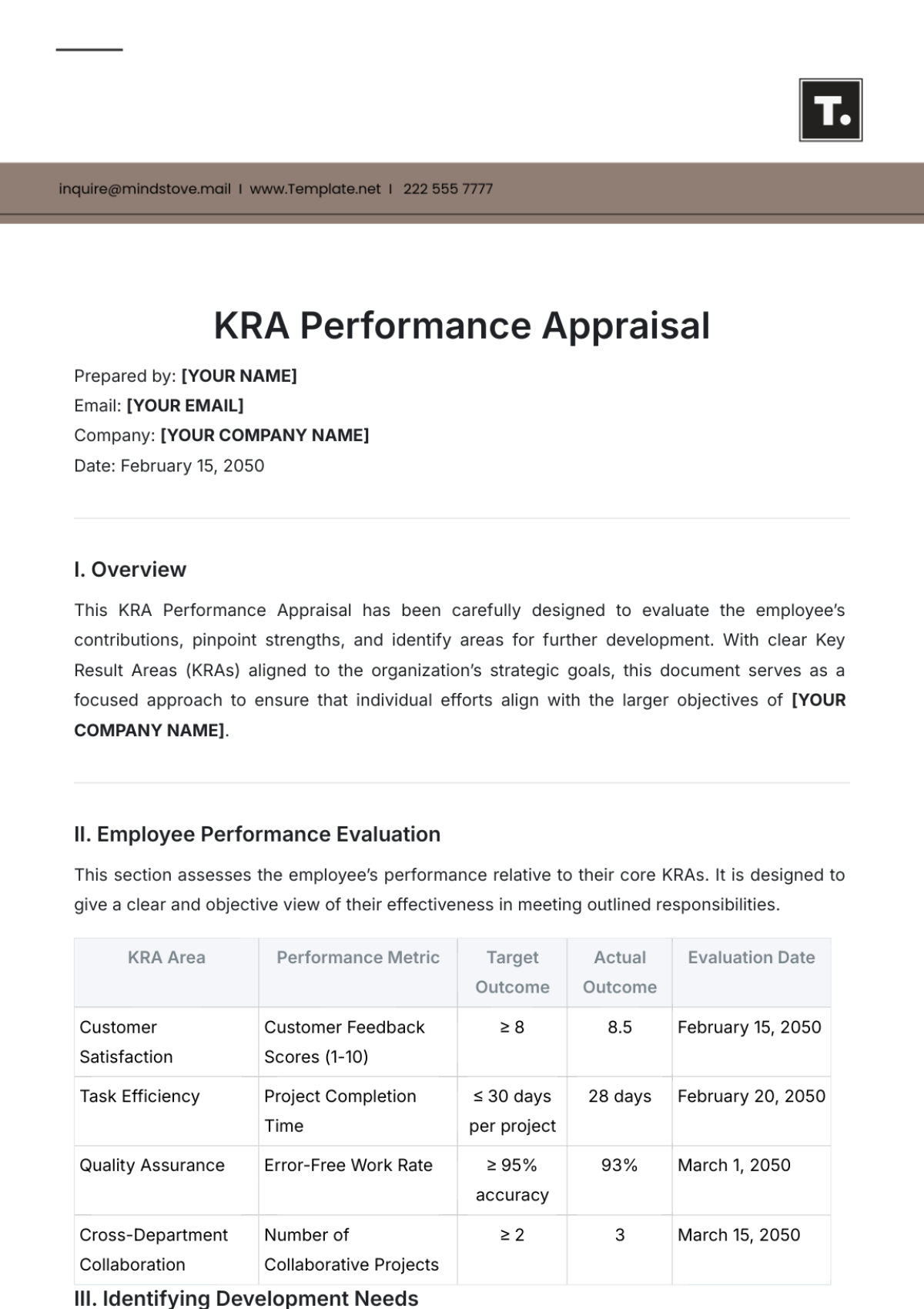Departmental Key Performance
Indicators Guide
TABLE OF CONTENTS
1. Introduction ............................................................................................................4
2.IT Operations Department .................................................................................5
3. IT Security Department .........................................................................9
4. IT Support and Helpdesk Department .......................................................10
5. IT Support and Helpdesk Department ........................................................11
6. Conclusion ............................................................................................................12
1. Introduction
In today's dynamic and highly competitive business landscape, the success of an IT company hinges on its ability to consistently deliver value, meet customer expectations, and align its operations with overarching strategic goals. To achieve these objectives, it is imperative for an IT company to establish clear and measurable Departmental Key Performance Indicators (KPIs) that guide the assessment of individual departments and the organization as a whole.
This Departmental KPIs Guide has been created to provide a comprehensive framework for identifying, tracking, and evaluating performance metrics across various departments within our IT company. It is designed to equip our teams with the necessary tools to monitor their progress, make informed decisions, and continuously enhance their processes and outcomes.
Purpose of the Guide
The primary purpose of this Departmental KPIs Guide is multi-faceted and aligns with the core objectives of our IT company:
Performance Measurement and Accountability: By establishing a set of well-defined KPIs for each department, we create a system for measuring and benchmarking performance. These KPIs serve as quantifiable indicators of success, enabling departments to take ownership of their goals and outcomes.
Strategic Alignment: KPIs are strategically selected to ensure that the activities and initiatives of each department align with the broader strategic objectives of our IT company. This guide assists in bridging the gap between departmental efforts and the organization's long-term vision.
Continuous Improvement: KPIs act as the foundation for continuous improvement efforts. They facilitate data-driven decision-making by providing departments with insights into what is working well and where improvements are needed. This, in turn, fosters a culture of continuous learning and innovation.
Customer Focus: Customer satisfaction is paramount in the IT industry. This guide includes KPIs that directly measure customer satisfaction and the quality of services provided. By focusing on these metrics, we can ensure that we consistently meet and exceed our customers' expectations.
Efficiency and Resource Optimization: Through the measurement of resource utilization, cost-effectiveness, and efficiency-related KPIs, departments can identify opportunities to optimize their operations, reduce waste, and enhance cost-efficiency.
Risk Management: Some KPIs in this guide pertain to risk management and compliance. By monitoring these metrics, we can proactively identify potential risks and ensure that our operations remain in compliance with industry standards and regulations.
Communication and Transparency: This guide fosters communication and transparency within our organization. It allows departmental leaders to share their performance data, achievements, and challenges with senior management and other stakeholders, promoting a culture of openness and collaboration.
In essence, this Departmental KPIs Guide serves as a vital tool to empower our IT company to thrive in a dynamic and demanding industry. It encourages departments to align their efforts with the company's strategic direction, continuously improve their processes, and, ultimately, provide exceptional value to our customers and stakeholders. Through the diligent application of these KPIs, we are better positioned to navigate the complexities of the IT landscape and emerge as a leader in innovation, customer satisfaction, and operational excellence.
2. IT Operations Department
Infrastructure Management
KPI 1: Server Uptime Percentage
Definition:
Server Uptime Percentage is the measure of the time our servers remain operational and available for use without interruptions.
Purpose:
Ensure high availability of critical services and applications.
Minimize downtime to prevent disruptions to business operations.
Evaluate the reliability of our server infrastructure.
Monitor the effectiveness of maintenance and updates.
Target:
Achieve a Server Uptime Percentage of 99.9% or higher.
Measurement and Monitoring:
Real-time server monitoring tools.
Regularly scheduled downtime for maintenance should be documented and excluded from uptime calculations.
KPI 2: Network Latency
Definition:
Network Latency measures the delay in data transmission between network devices, typically measured in milliseconds (ms).
Purpose:
Ensure optimal network performance for users and applications.
Identify and rectify network bottlenecks and latency issues.
Enhance user experience and application responsiveness.
Support real-time and latency-sensitive applications.
Target:
Maintain network latency below 20 ms for local networks and below 50 ms for remote connections.
Measurement and Monitoring:
Regular network latency tests and monitoring using network performance tools.
Analysis of latency spikes and trends to identify root causes.
KPI 3: Mean Time to Repair (MTTR) for Critical Issues
Definition:
MTTR measures the average time taken to repair and restore services or systems after a critical incident or outage.
Purpose:
Minimize service disruptions and downtime.
Gauge the efficiency of incident response and resolution processes.
Improve incident management and escalation procedures.
Enhance customer satisfaction by reducing service downtime.
Target:
Achieve an MTTR of less than 2 hours for critical incidents.
Measurement and Monitoring:
Incident tracking and management system.
Regular post-incident reviews to identify opportunities for improvement.
Documentation of incident resolution times.
Incident Management
KPI 4: Number of Incidents Reported
Definition:
The Number of Incidents Reported measures the total count of incidents reported to the Incident Management Department within a specific time frame.
Purpose:
Evaluate the scope and volume of incidents affecting our IT services.
Identify trends and patterns in incident reporting.
Allocate resources effectively based on incident volume.
Assess the overall health of our IT environment.
Target:
Aim to have a comprehensive record of all incidents reported within a given period.
Measurement and Monitoring:
Incident tracking system or ticketing platform.
Regular reviews and categorization of incident reports.
KPI 5: Average Incident Resolution Time
Definition:
The Average Incident Resolution Time measures the average time taken to resolve incidents reported to the Incident Management Department.
Purpose:
Minimize service disruptions by ensuring swift incident resolution.
Evaluate the efficiency of incident response and resolution processes.
Set clear expectations for incident resolution times.
Improve resource allocation and incident prioritization.
Target:
Achieve an Average Incident Resolution Time of less than [X] hours/minutes.
Measurement and Monitoring:
Incident tracking system data.
Regular reviews of incident resolution times and trends.
KPI 6: Customer Satisfaction Score (CSAT) for Incident Resolution
Definition:
The Customer Satisfaction Score (CSAT) for Incident Resolution is a measure of user satisfaction with the resolution of their reported incidents, typically collected through post-incident surveys.
Purpose:
Assess the quality of incident resolution services from the user's perspective.
Identify areas for improvement in incident handling.
Strengthen the relationship between IT and end-users.
Drive continuous improvement in incident management processes.
Target:
Maintain a CSAT score of [X]% or higher for incident resolution.
Measurement and Monitoring:
Post-incident surveys sent to users.
Regular analysis of CSAT scores and feedback.
3. IT Security Department
KPI 7: Mean Time to Detect (MTTD)
Definition:
MTTD measures the average time it takes to detect a security incident from the moment it occurs or is initiated.
Purpose:
Swiftly identify security incidents to minimize potential damage.
Evaluate the efficiency of our incident detection mechanisms.
Identify and address gaps in our detection capabilities.
Enhance the organization's ability to respond effectively to incidents.
Target:
Maintain an MTTD of [X] hours/minutes or less.
Measurement and Monitoring:
Logging and monitoring systems.
Incident detection tools and processes.
Regular assessment of incident detection times.
KPI 8: Mean Time to Respond (MTTR)
Definition:
MTTR measures the average time it takes to respond to and resolve a security incident once it has been detected.
Purpose:
Minimize the impact of security incidents by reducing response times.
Assess the efficiency of our incident response procedures.
Identify bottlenecks and areas for improvement in incident resolution.
Strengthen incident containment and mitigation strategies.
Target:
Maintain an MTTR of [X] hours/minutes or less.
Measurement and Monitoring:
Incident response tracking and management system.
Regular post-incident reviews to assess response times and effectiveness.
4. IT Support and Helpdesk Department
KPI 9: Average Time to First Response
Definition:
Average Time to First Response measures the average time it takes for a customer to receive an initial response from our support team after submitting a support request or inquiry.
Purpose:
Ensure timely acknowledgment of customer inquiries.
Set clear expectations for response times.
Identify bottlenecks or delays in the support process.
Enhance customer perception of responsiveness.
Target:
Maintain an Average Time to First Response of [X] hours/minutes or less.
Measurement and Monitoring:
Support ticketing system and tracking.
Regular review and analysis of response times.
KPI 10: Customer Satisfaction (CSAT) Score
Definition:
The Customer Satisfaction (CSAT) Score is a metric that quantifies customer satisfaction based on their feedback, typically collected through post-interaction surveys.
Purpose:
Measure and benchmark customer satisfaction.
Identify areas for improvement in the support experience.
Gauge the effectiveness of support interactions.
Strengthen customer loyalty and retention.
Target:
Maintain a CSAT score of [X]% or higher.
Measurement and Monitoring:
Post-interaction surveys sent to customers.
Analysis of CSAT scores and feedback comments.
5. IT Strategy and Planning
KPI 11: Alignment of IT Initiatives with Business Goals
Definition:
The Alignment of IT Initiatives with Business Goals measures the extent to which our IT projects, initiatives, and strategies are aligned with the overall strategic objectives and priorities of the organization.
Purpose:
Ensure that IT resources and efforts are directed toward initiatives that directly support business goals.
Foster collaboration and communication between IT and other business units.
Improve decision-making by assessing the strategic relevance of IT projects.
Enhance the organization's ability to respond to changing market conditions.
Target:
Aim for a high level of alignment, with [X]% of IT initiatives directly supporting identified business goals.
Measurement and Monitoring:
Regular assessment and mapping of IT initiatives to business objectives.
Collaboration and alignment discussions with business leaders.
KPI 12: IT Investment ROI (Return on Investment)
Definition:
IT Investment ROI measures the return on investment for IT expenditures, including hardware, software, personnel, and infrastructure, by assessing the financial gains or cost savings generated.
Purpose:
Evaluate the financial effectiveness of IT investments.
Identify areas for cost optimization and resource allocation.
Ensure that IT spending delivers tangible business value.
Inform future investment decisions and budget planning.
Target:
Achieve a positive ROI on all significant IT investments.
Measurement and Monitoring:
Financial analysis and tracking of IT project costs and benefits.
Post-implementation reviews to assess actual ROI.
KPI 13: Technology Innovation Rate
Definition:
Technology Innovation Rate measures the pace at which new and innovative technologies are adopted and integrated into our IT infrastructure and processes.
Purpose:
Foster a culture of innovation within the IT department.
Ensure that our technology stack remains competitive and up-to-date.
Support business growth and agility through technology advancements.
Enhance our ability to meet evolving customer needs.
Target:
Maintain a steady and adaptable rate of technology innovation, with [X]% of new technologies integrated annually.
Measurement and Monitoring:
Tracking the adoption and integration of new technologies and tools.
Regular assessments of technology trends and their potential impact on our operations.
6. Conclusion
In today's dynamic and highly competitive business landscape, the effective management and measurement of key performance indicators (KPIs) play a pivotal role in achieving organizational excellence. This comprehensive KPI framework, spanning various departments within our IT company, serves as a blueprint for success, enabling us to align our efforts, evaluate our progress, and continually improve our operations.
From Infrastructure Management ensuring the reliability of our IT infrastructure to Development Efficiency optimizing our software development processes, from Security Incident Response safeguarding our digital assets to Customer Support delivering exceptional service, and from Strategic Alignment keeping IT initiatives in sync with business objectives to Governance and Risk Management mitigating potential threats, these KPIs are the cornerstone of our success.
Through diligent tracking and analysis of these KPIs, we enhance our ability to:
Meet Strategic Goals: Aligning our initiatives with our business objectives ensures that we stay on course to achieve our long-term vision.
Optimize Operations: By evaluating efficiency, quality, and response times, we drive improvements in our processes, resulting in cost-effectiveness and customer satisfaction.
Mitigate Risks: Continuously assessing risks and compliance helps us proactively address vulnerabilities and ensure data security and regulatory adherence.
Deliver Outstanding Customer Service: With customer-focused KPIs, we ensure that our customers receive timely, efficient, and satisfactory support.
Foster Innovation: Measuring our technology innovation rate ensures that we remain agile and competitive in an ever-evolving landscape.
This KPI framework empowers our organization to adapt to changing circumstances, make informed decisions, and demonstrate a commitment to excellence. Regularly reviewing, updating, and analyzing these KPIs will be instrumental in achieving our strategic objectives, enhancing operational efficiency, and fostering a culture of continuous improvement. As we embrace this framework, we reinforce our dedication to delivering value to our customers, securing our digital assets, and advancing as a leader in the IT industry.

